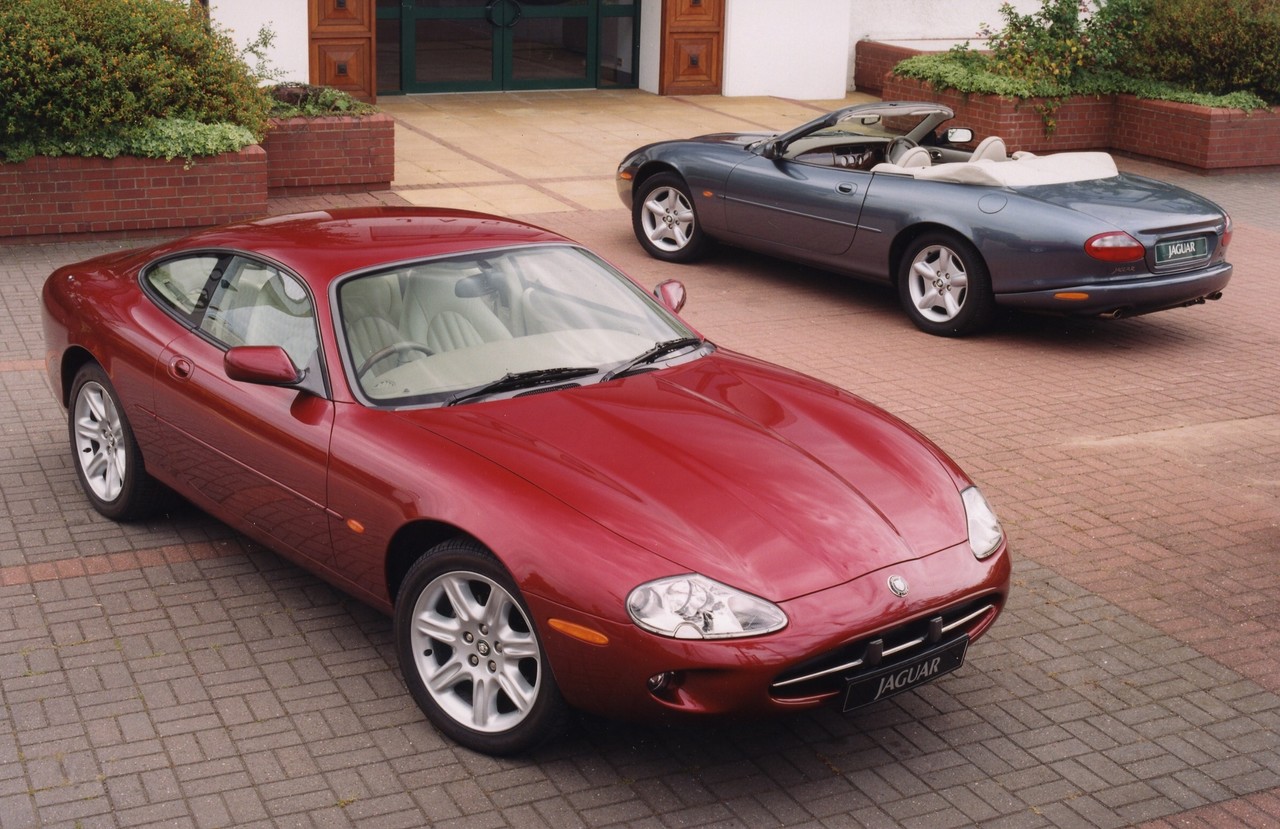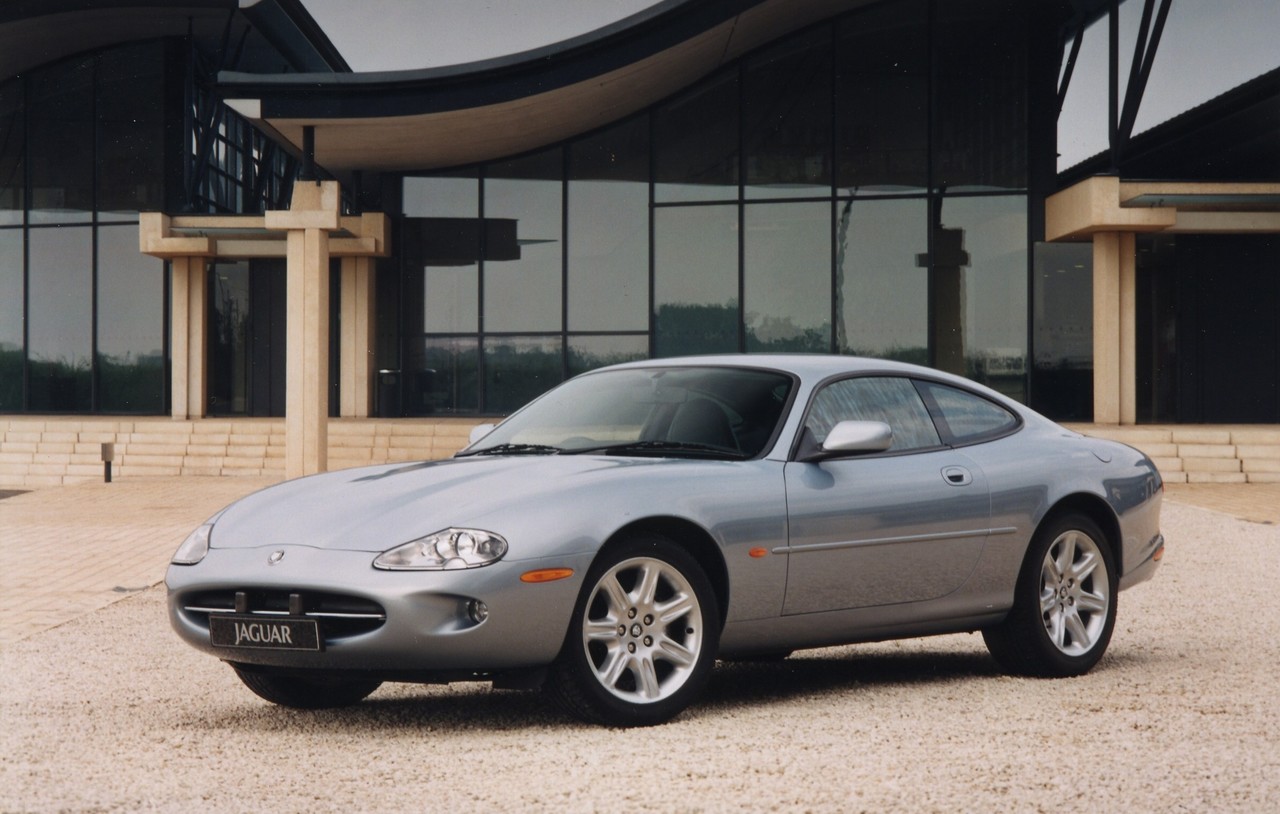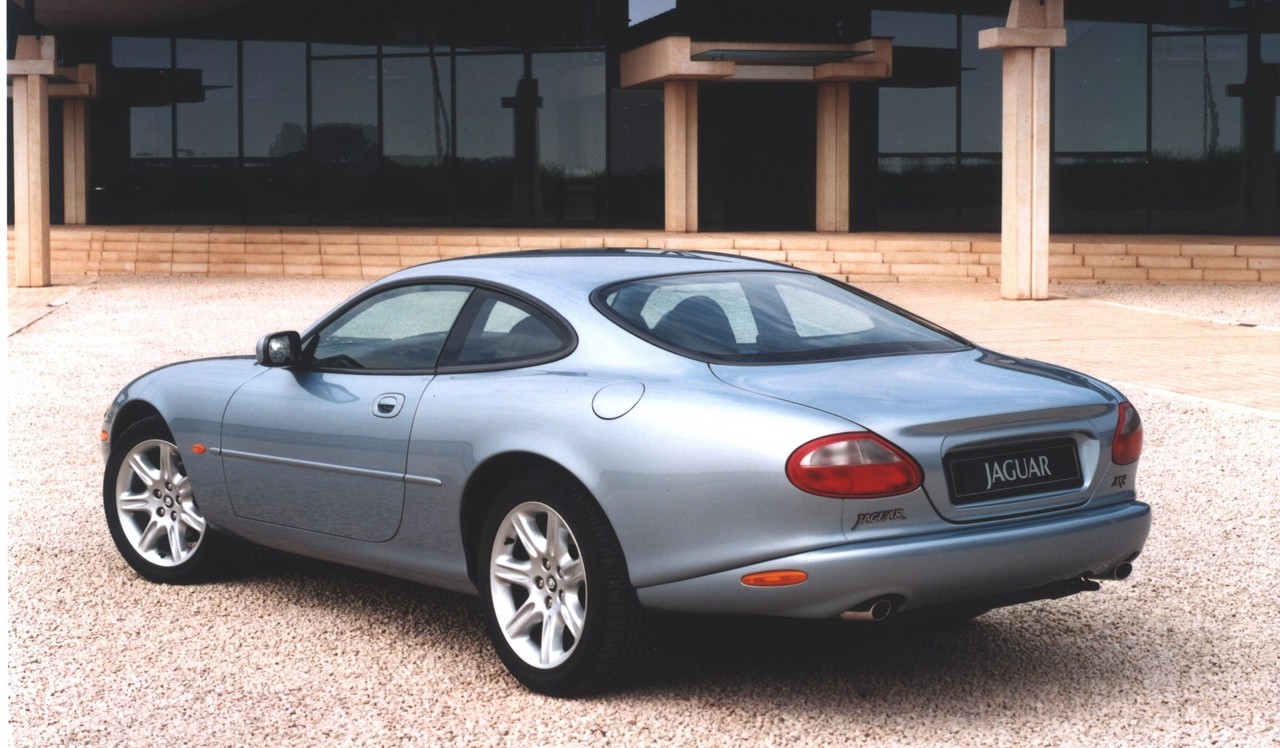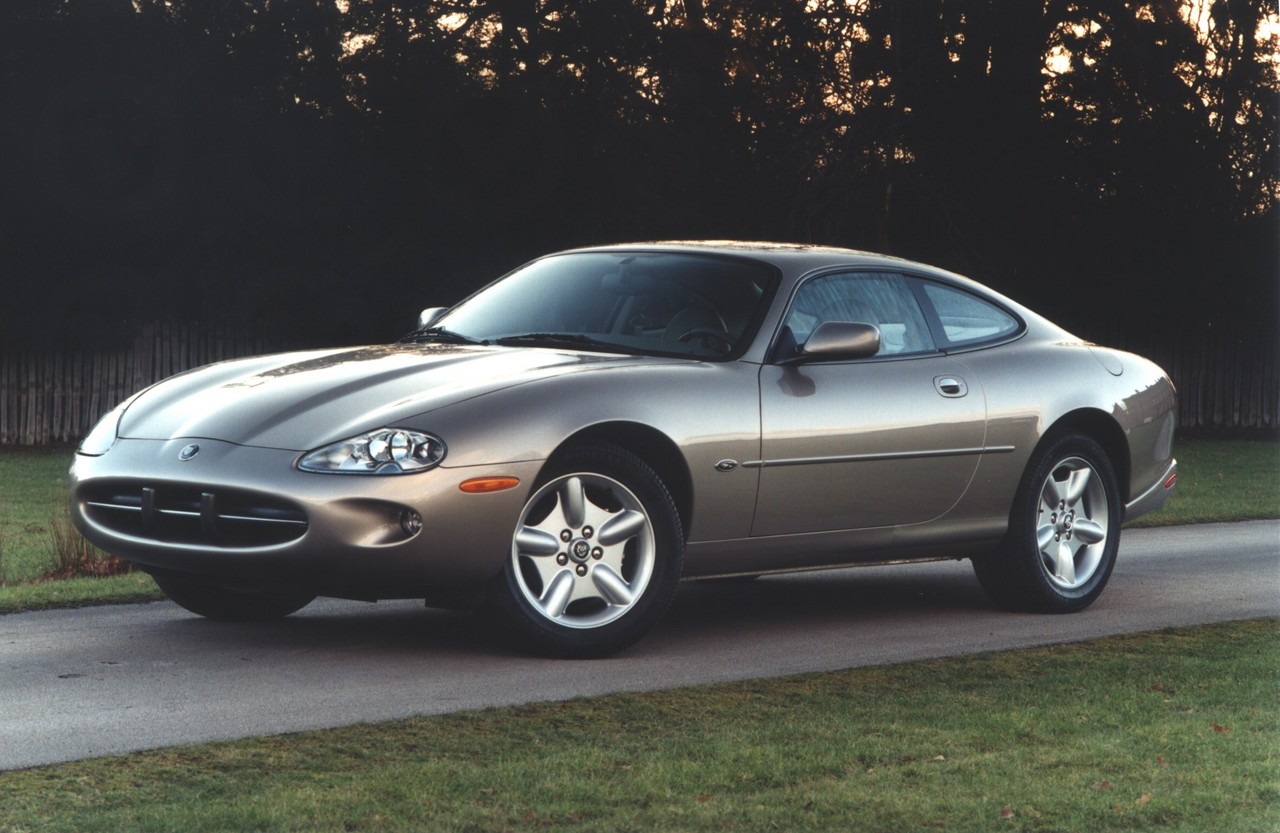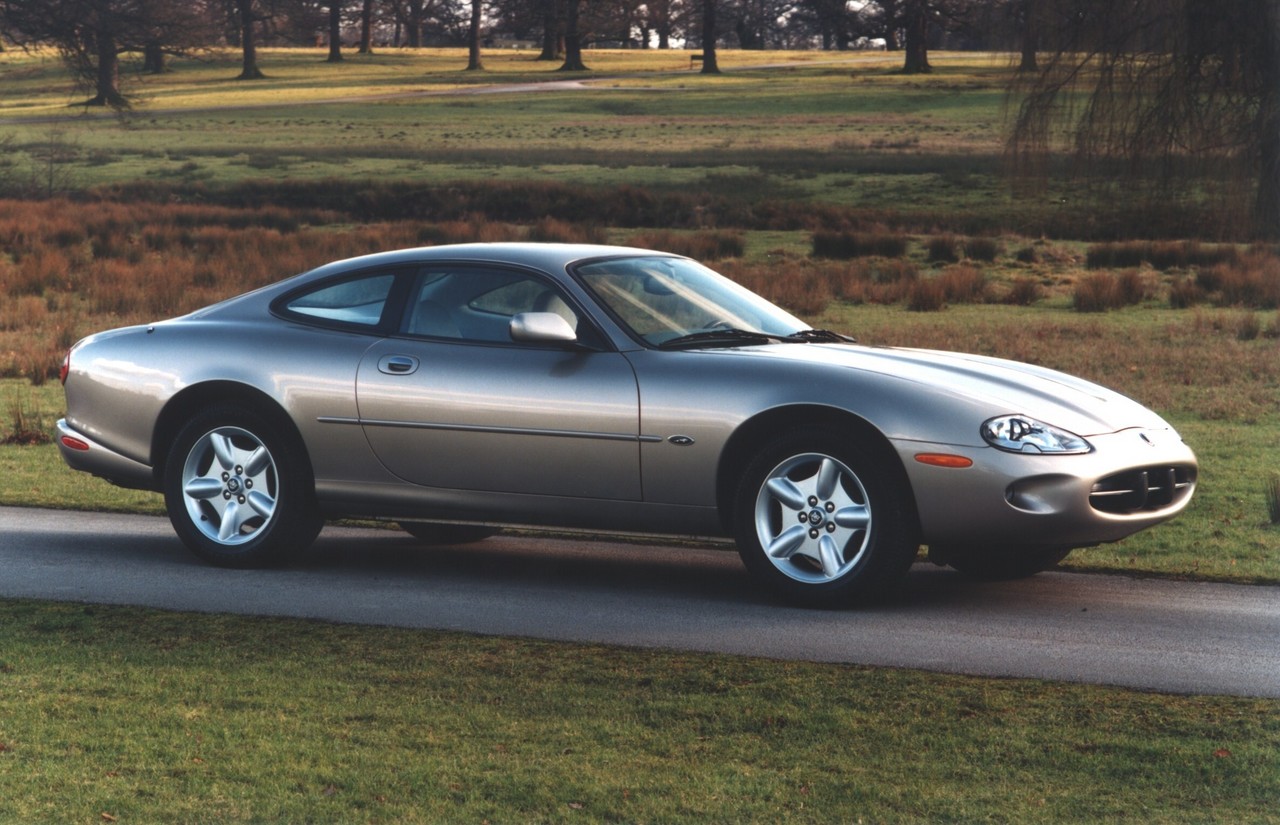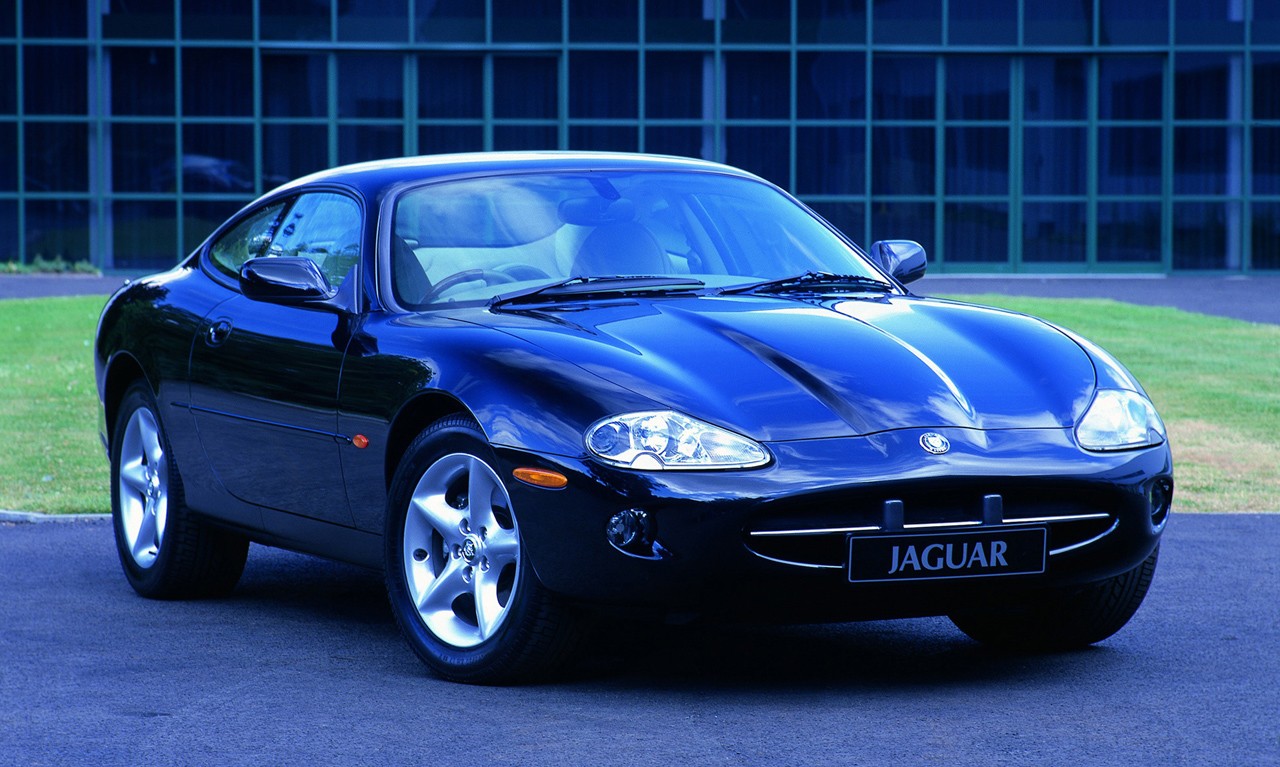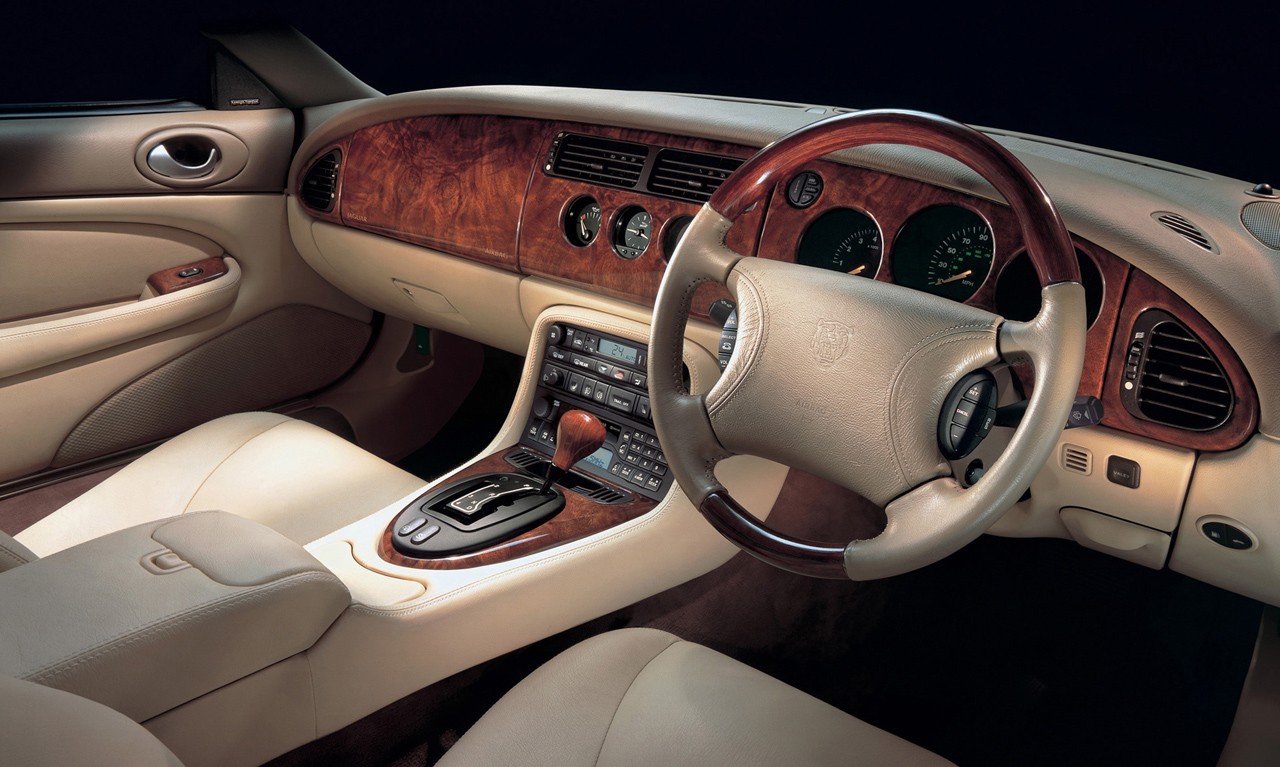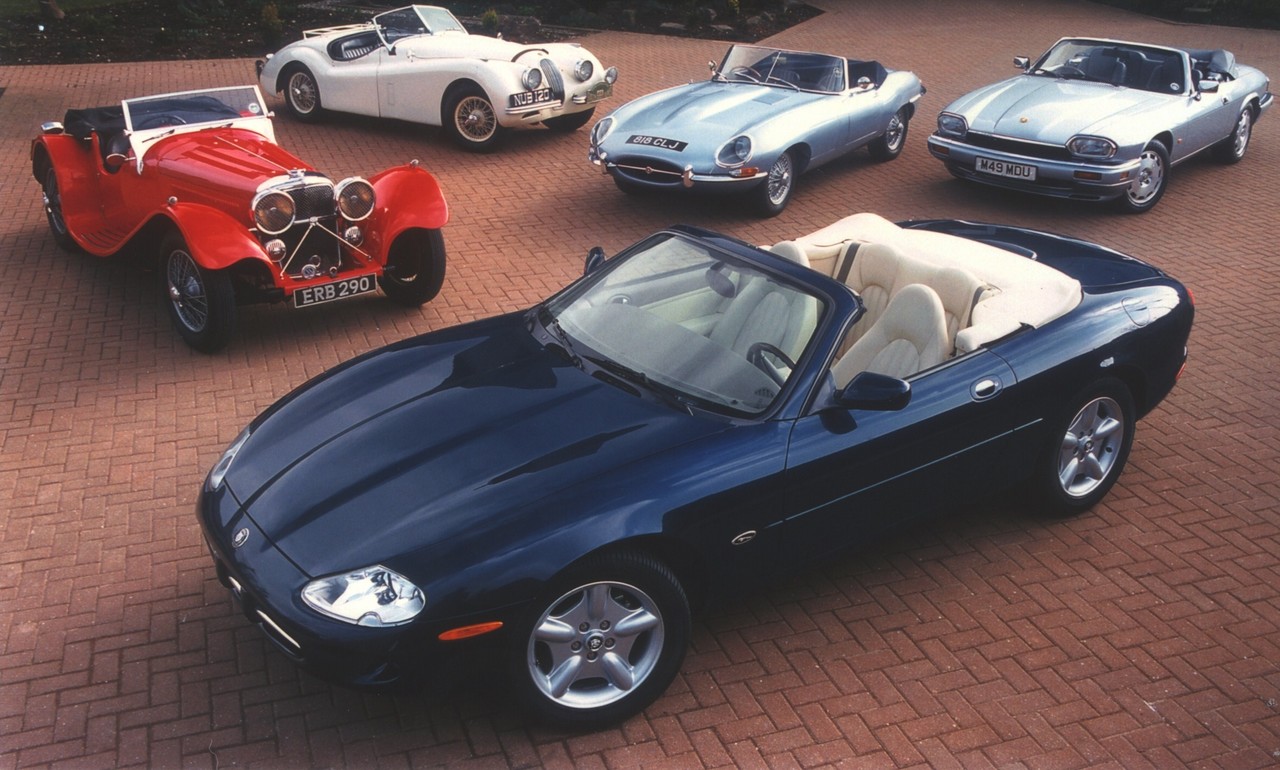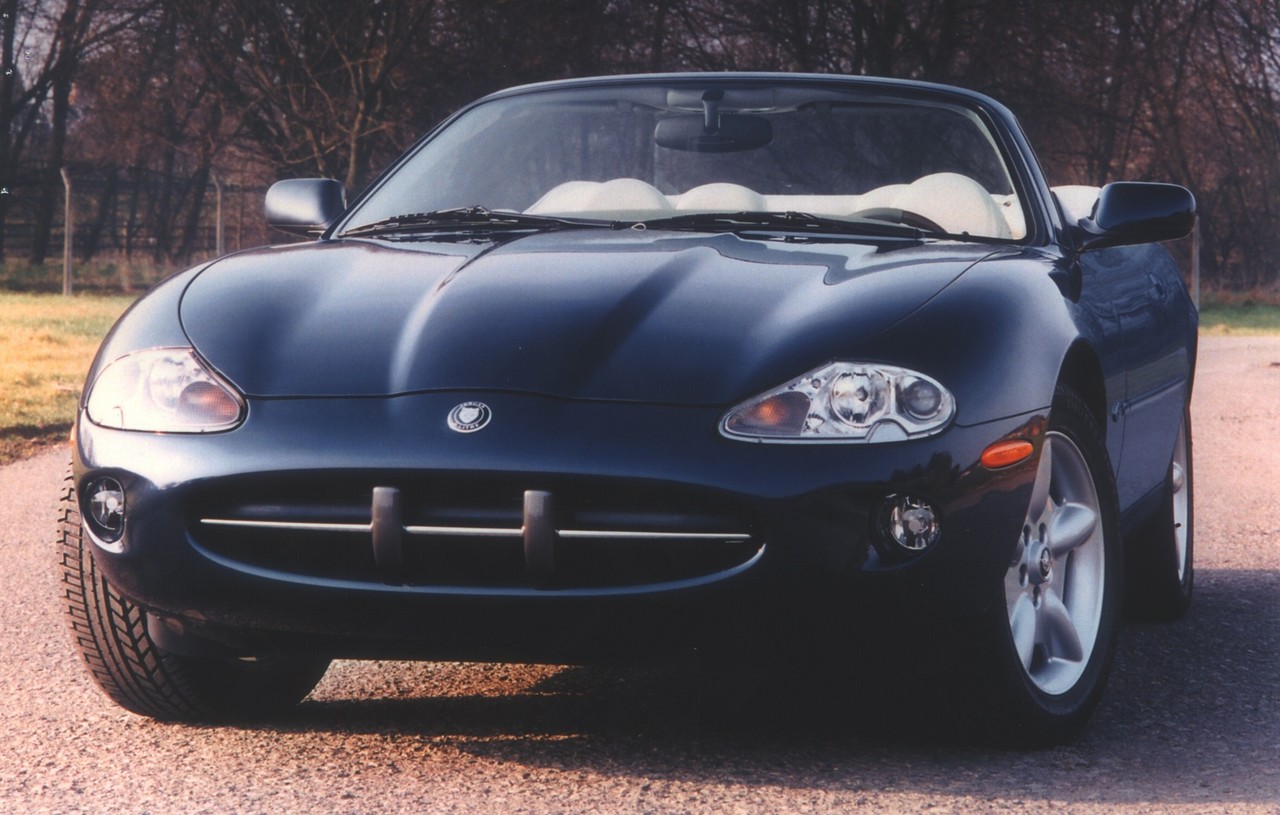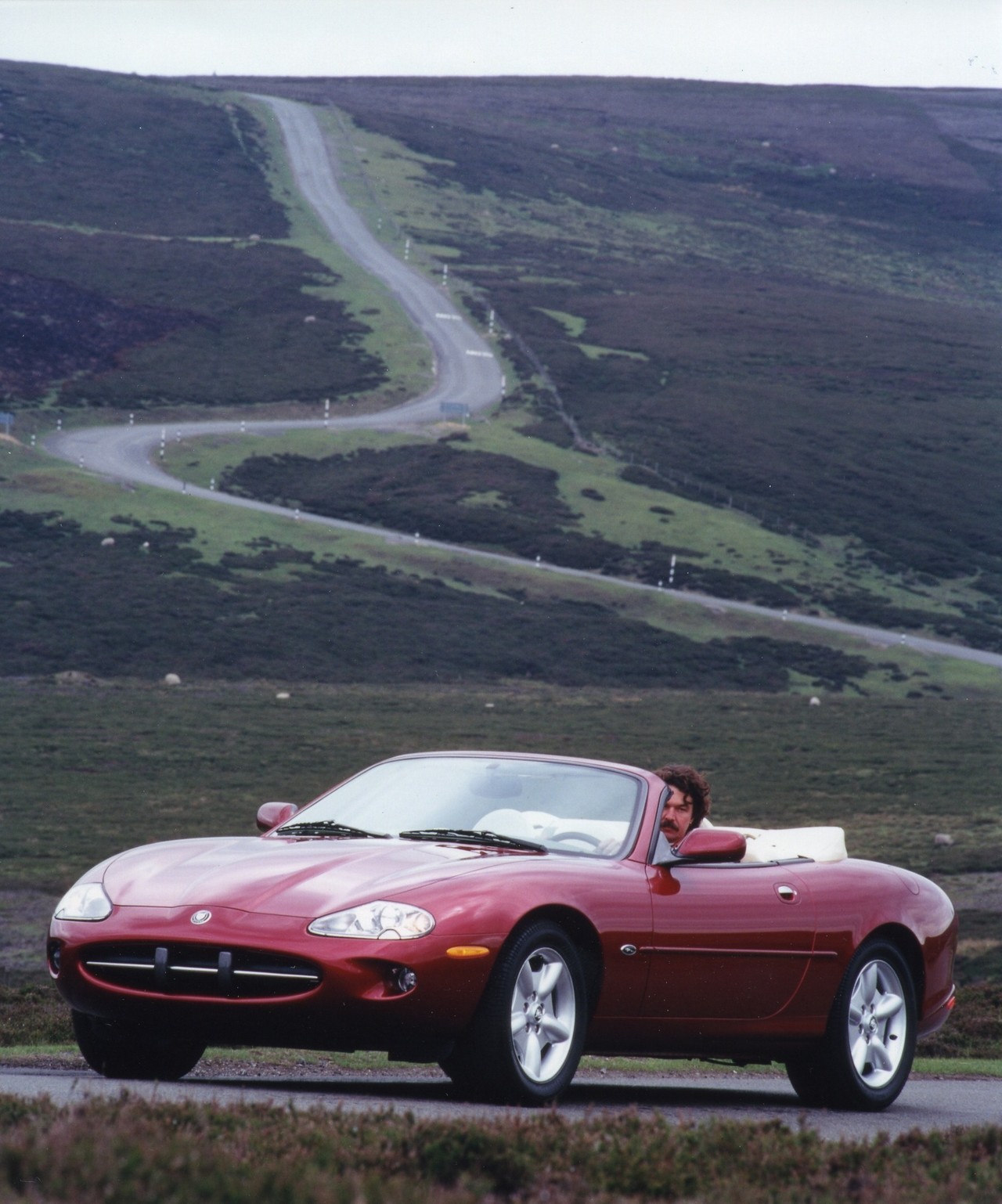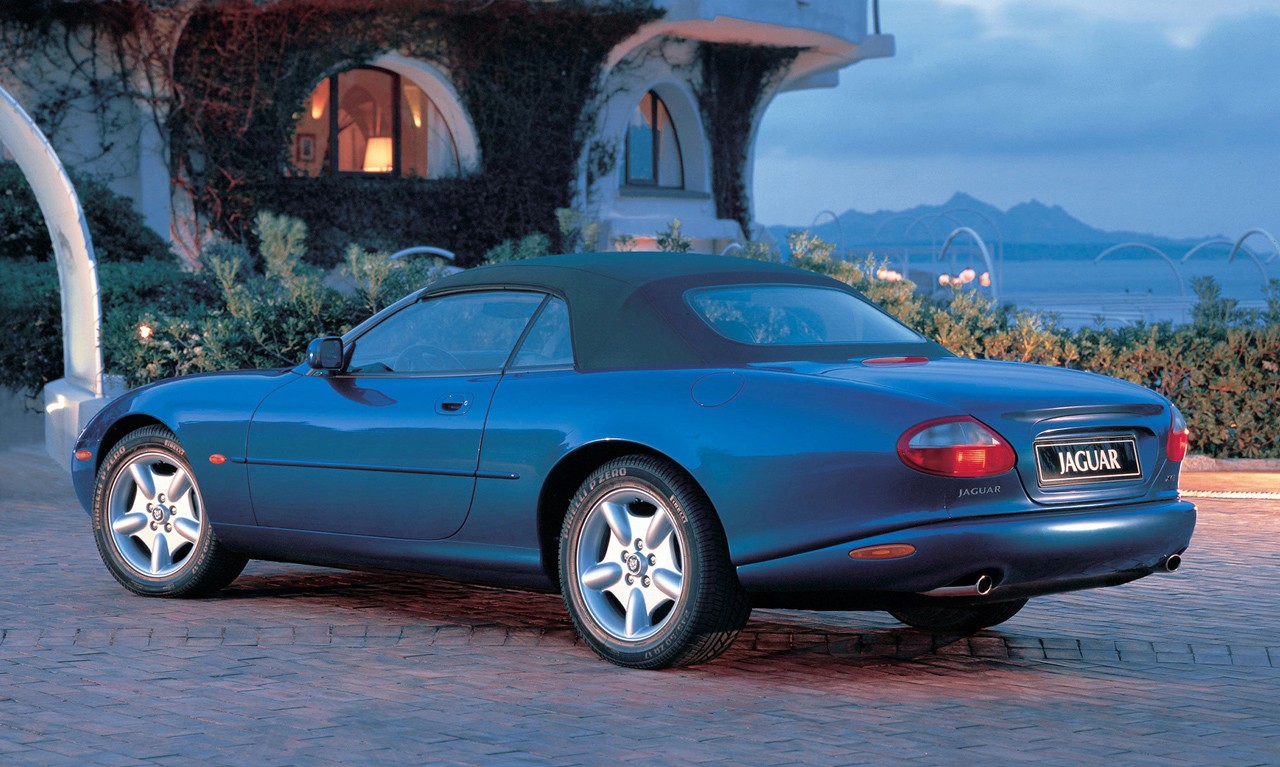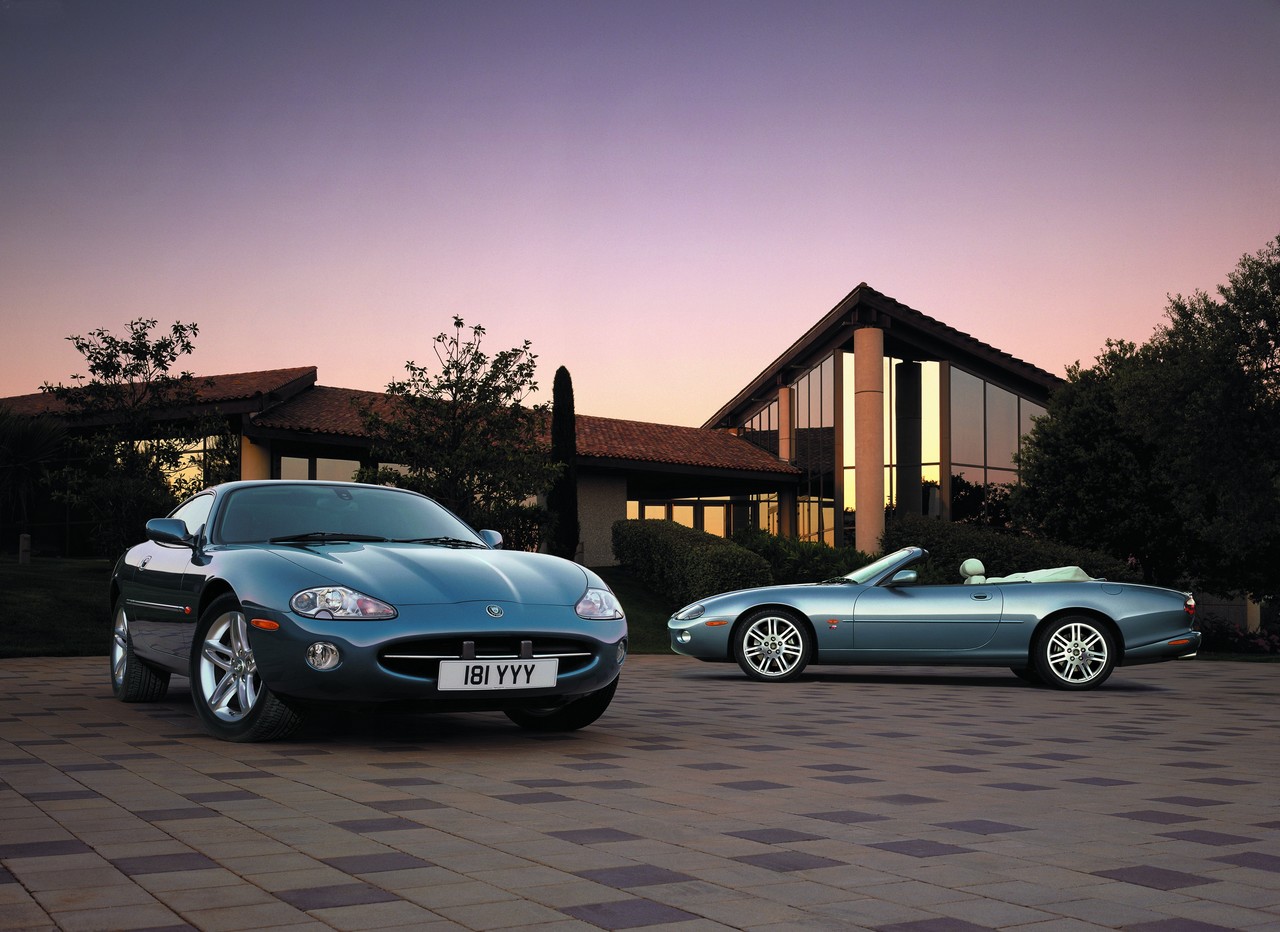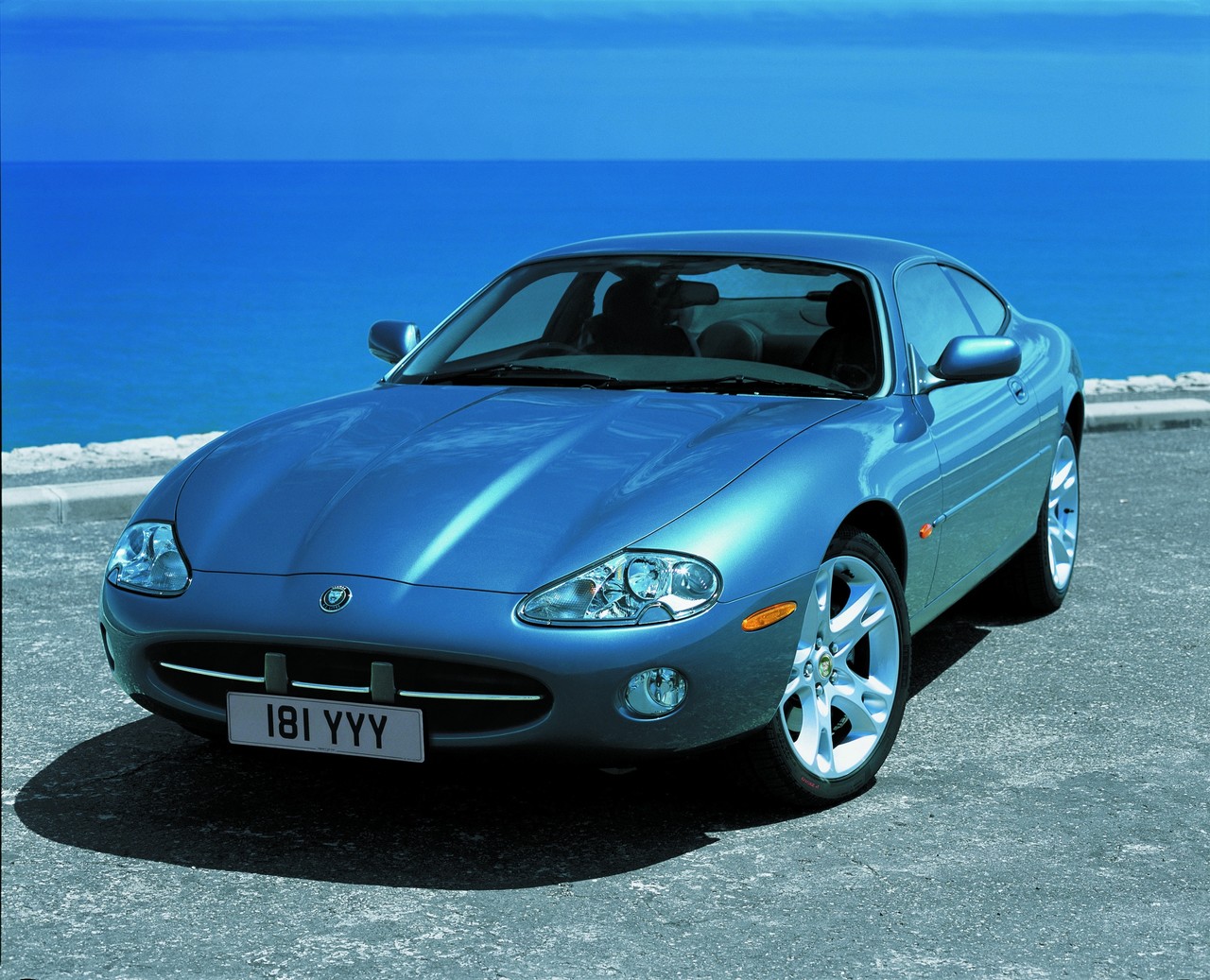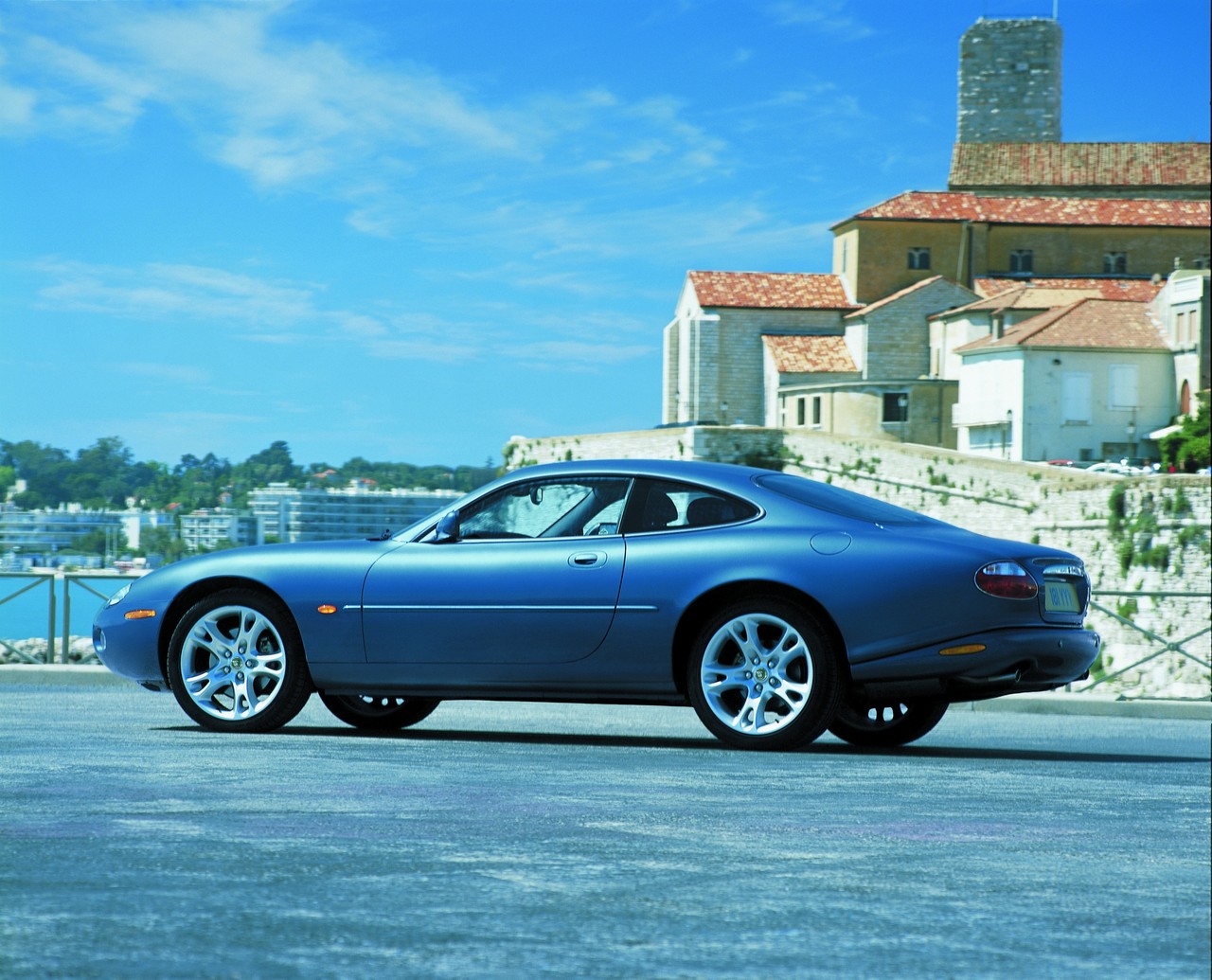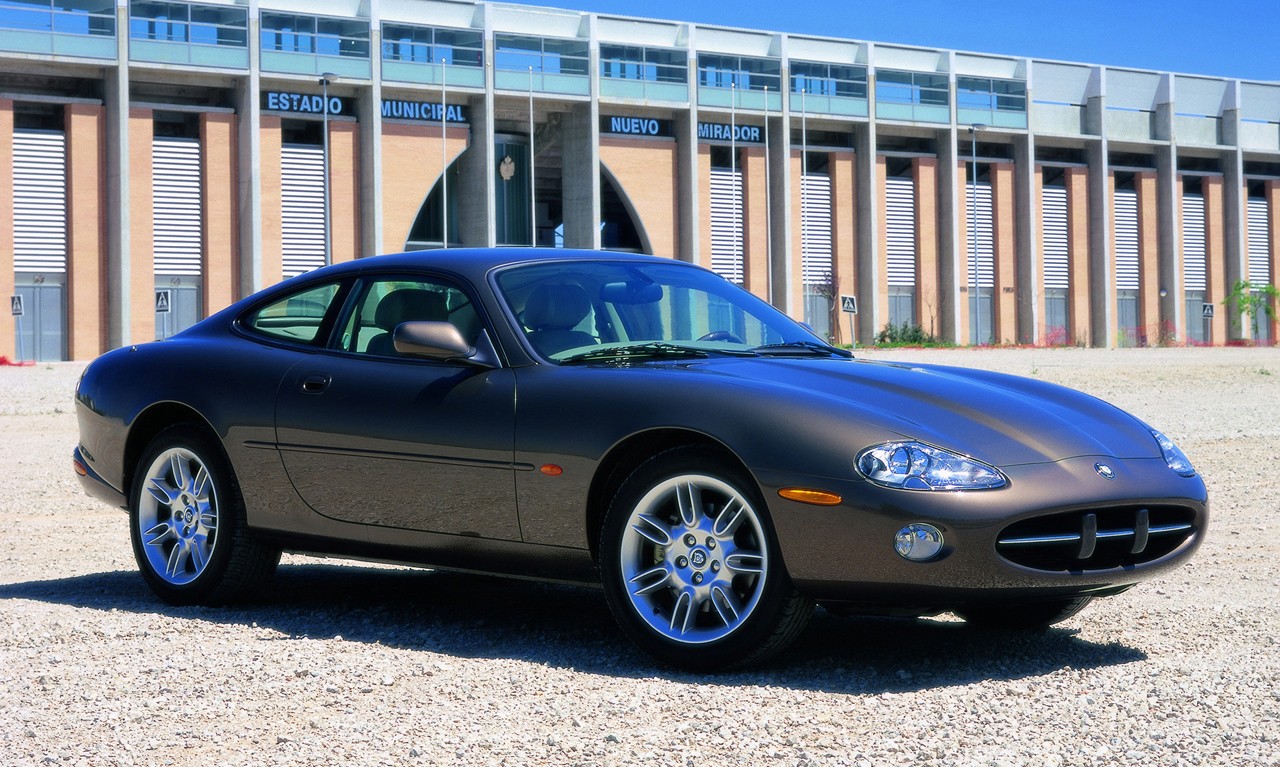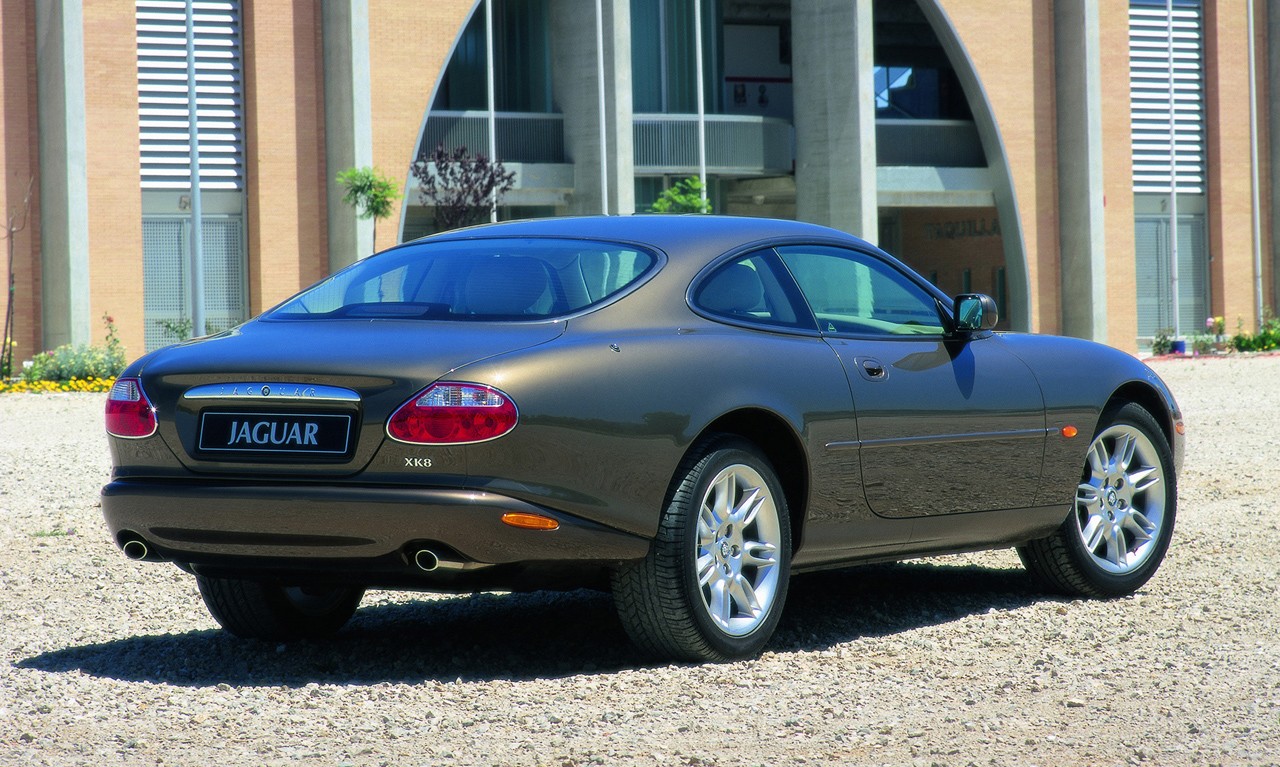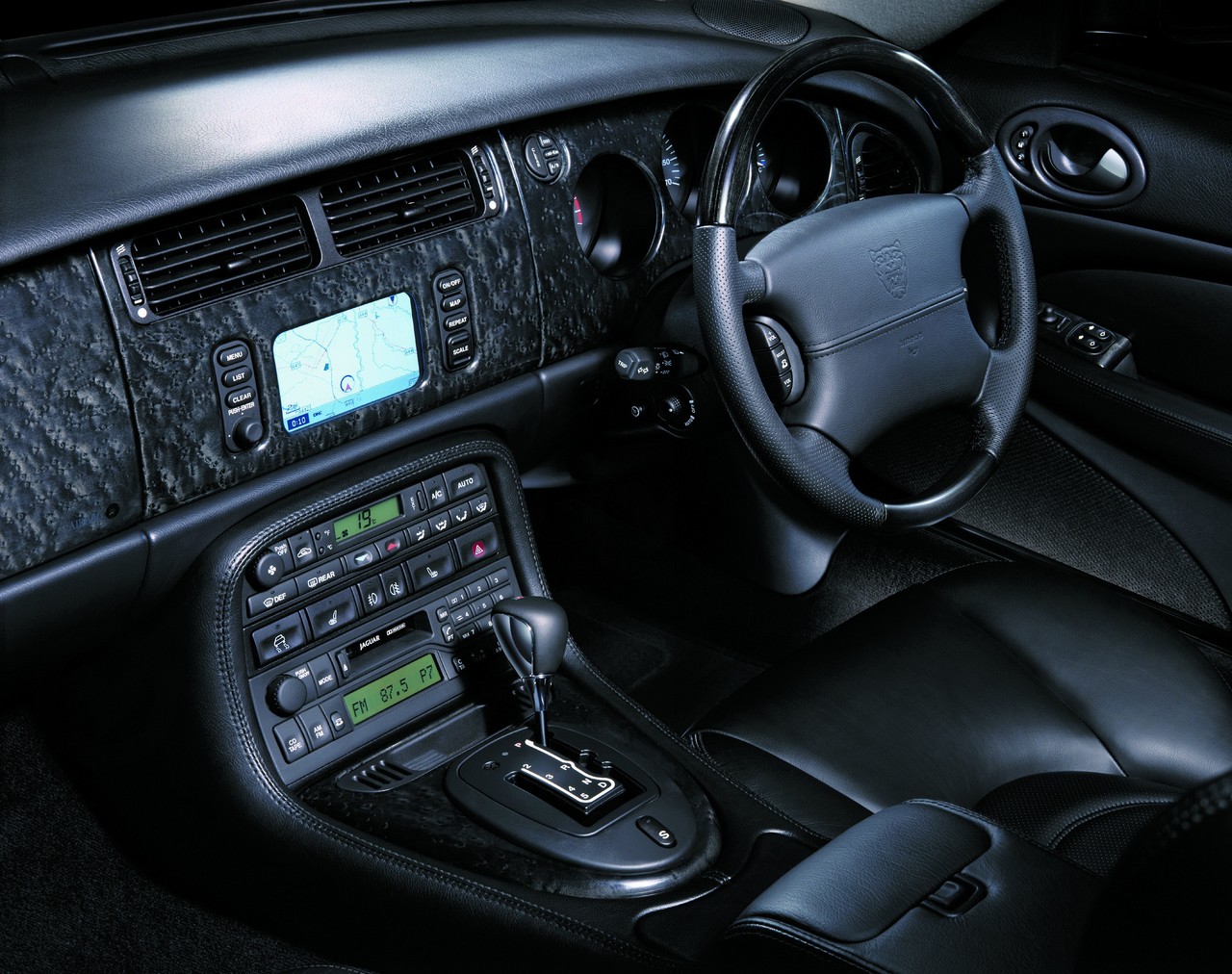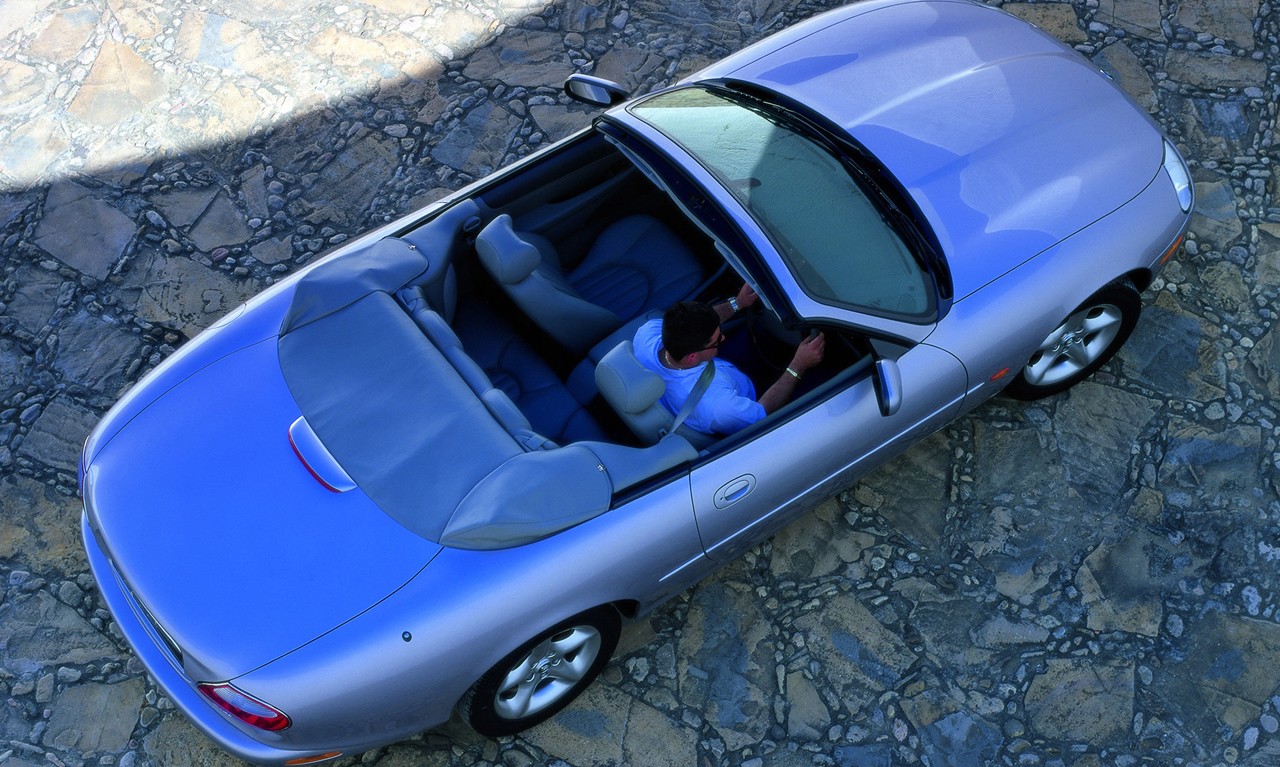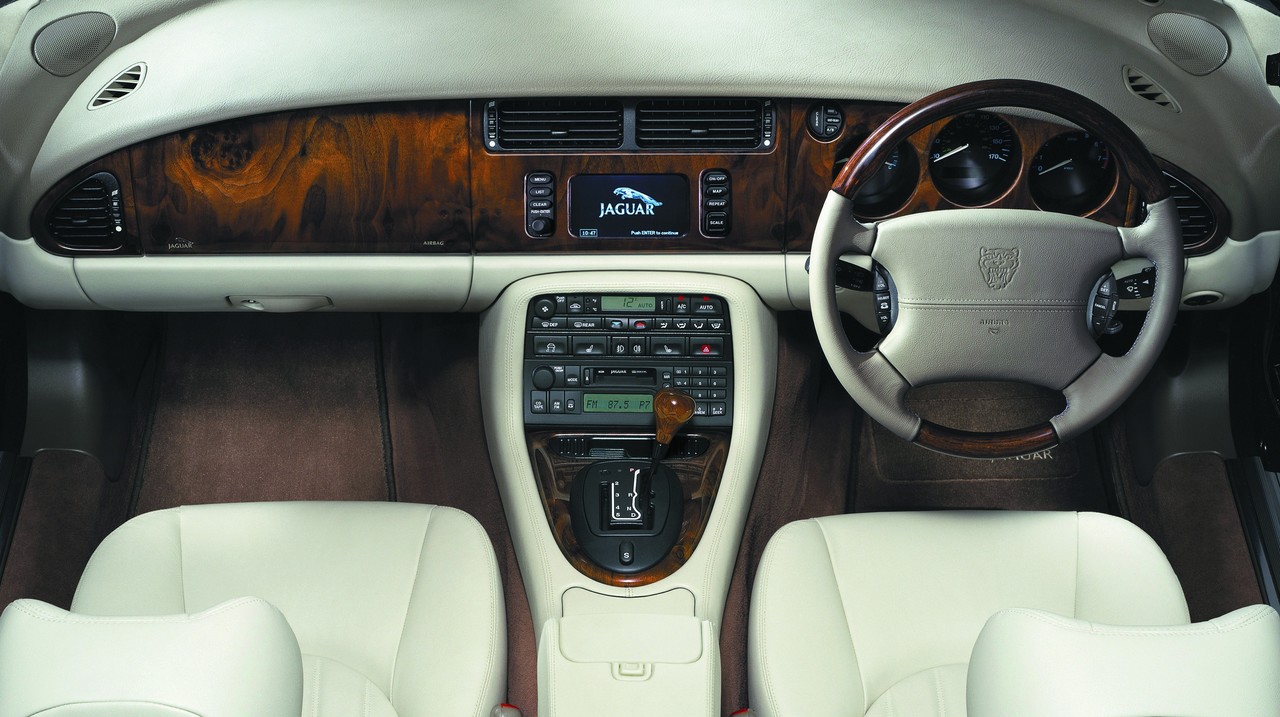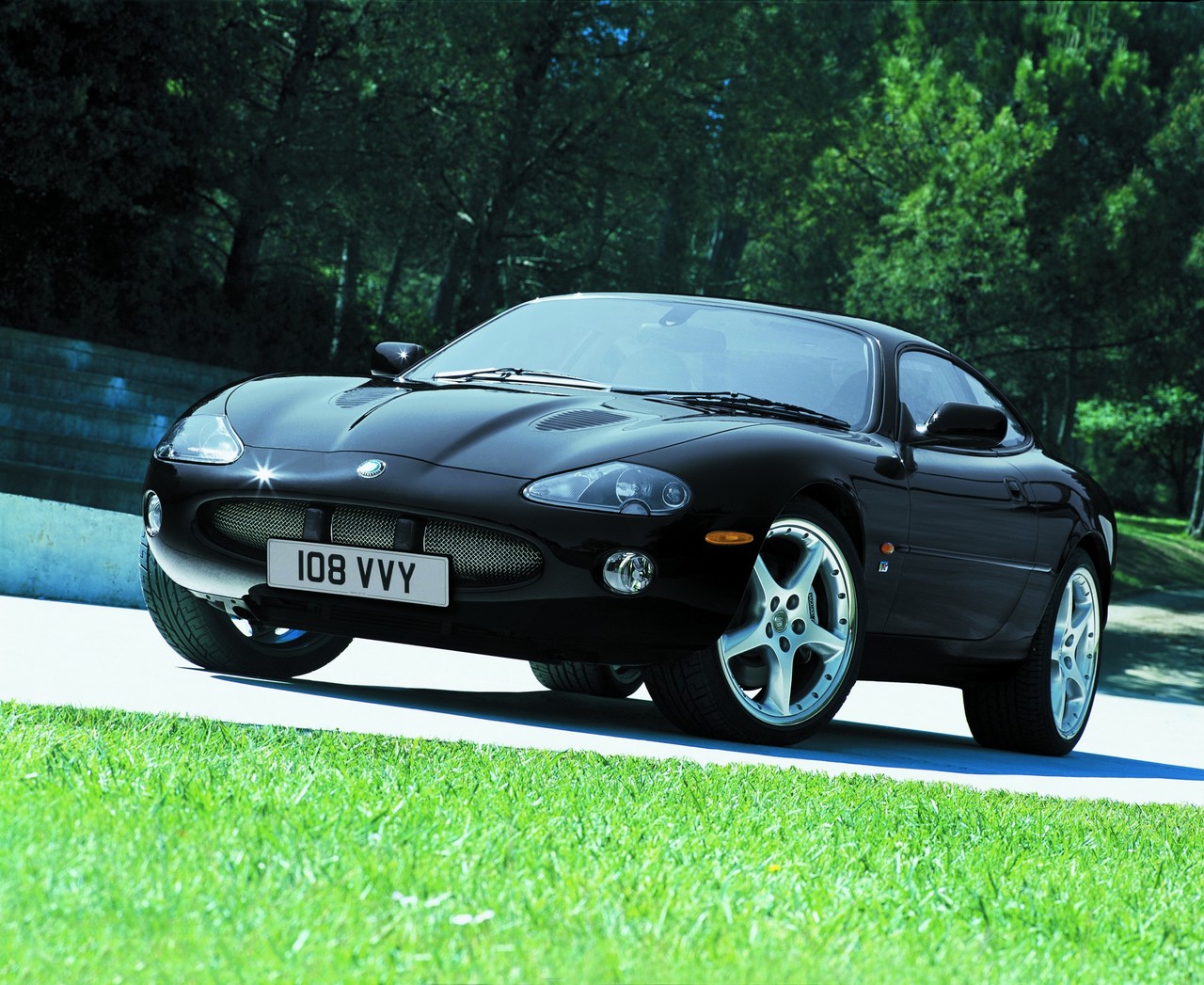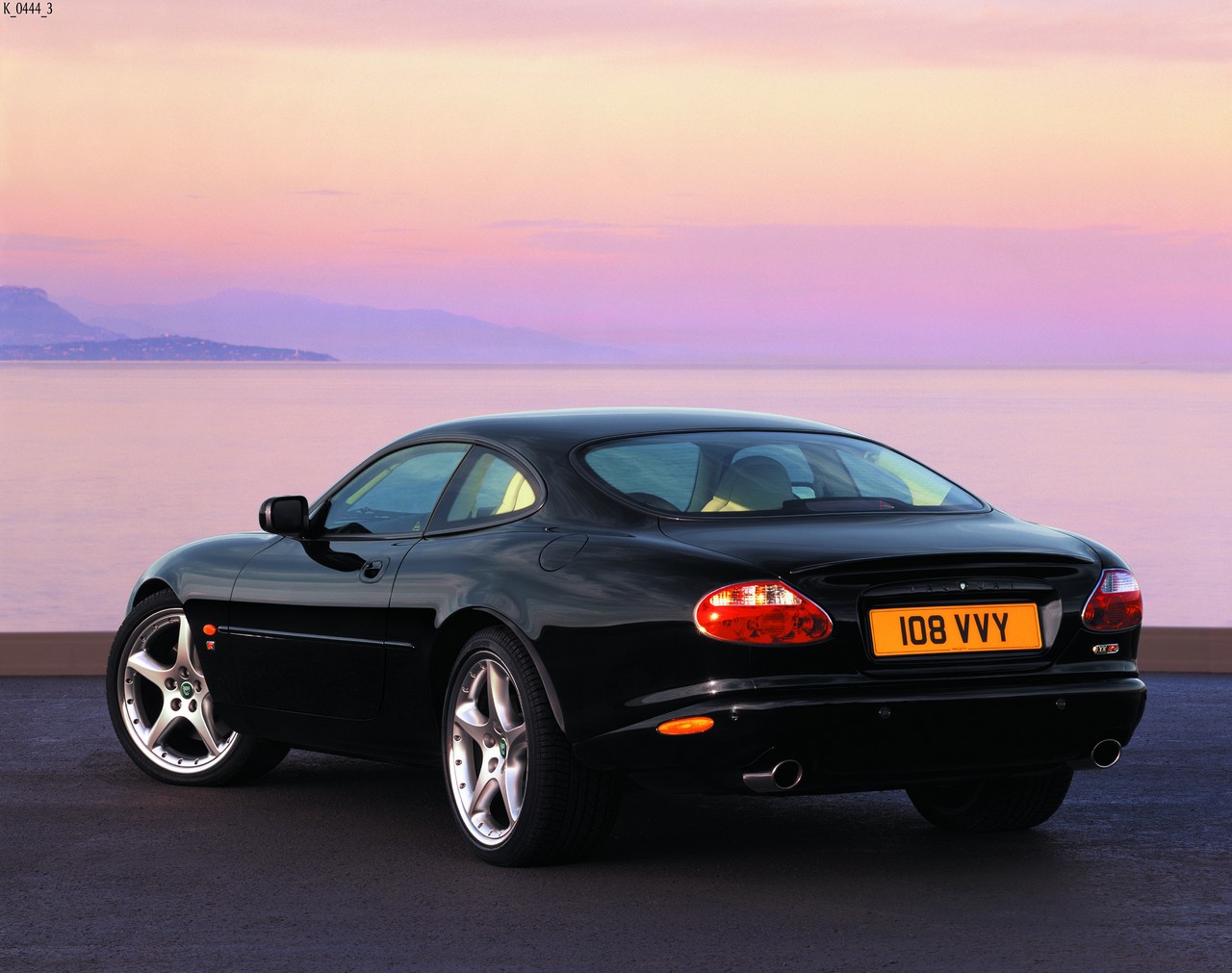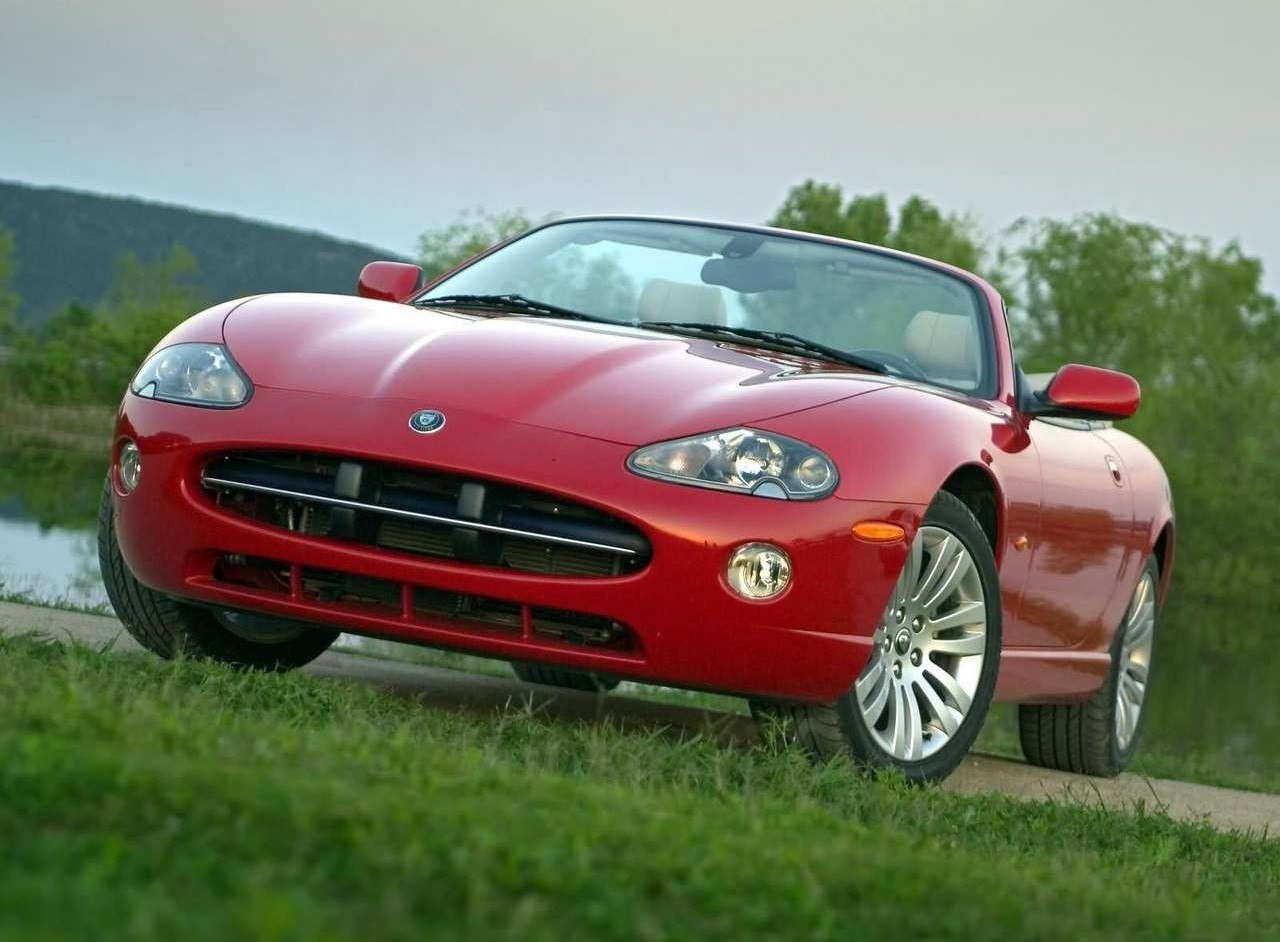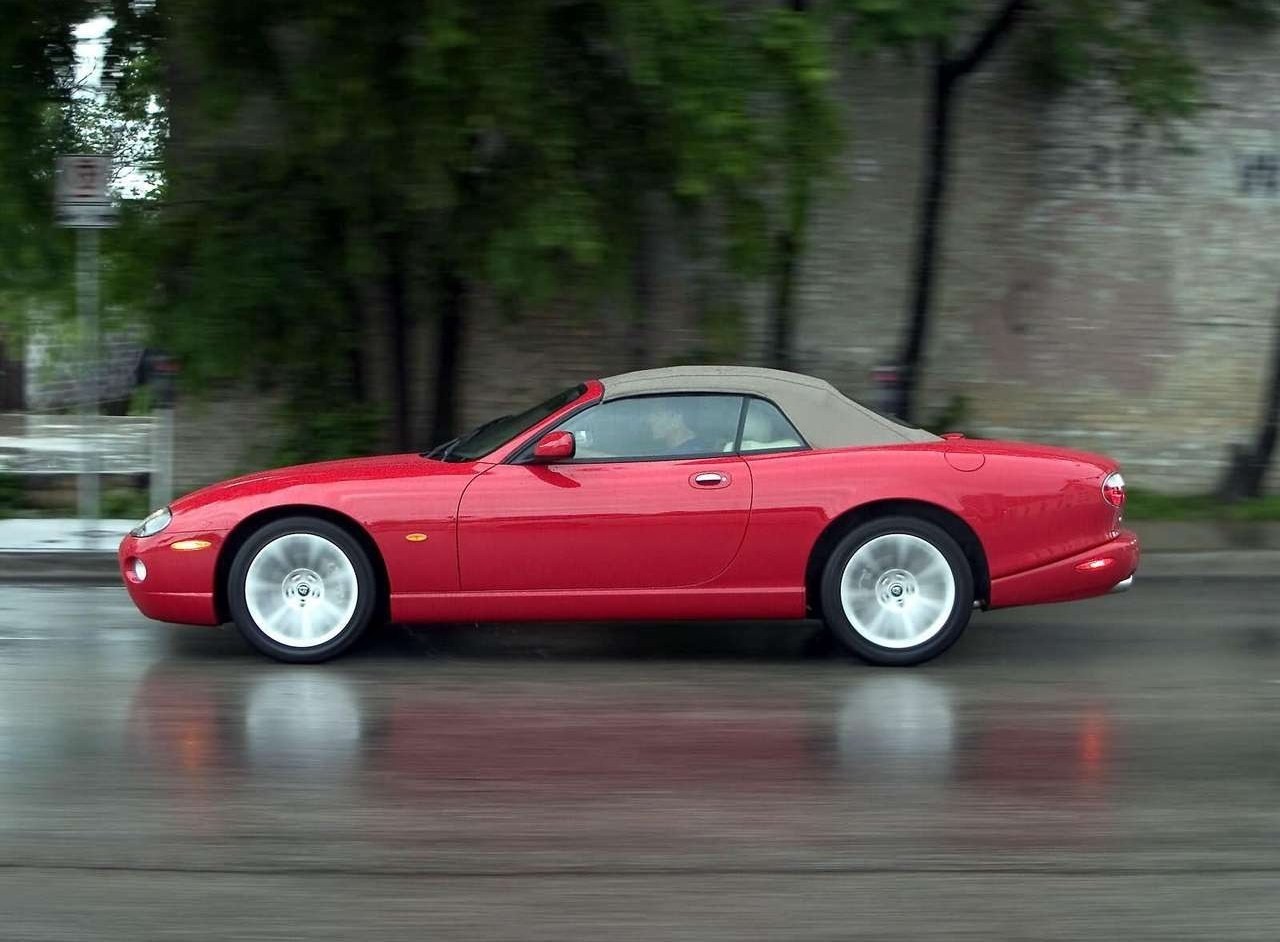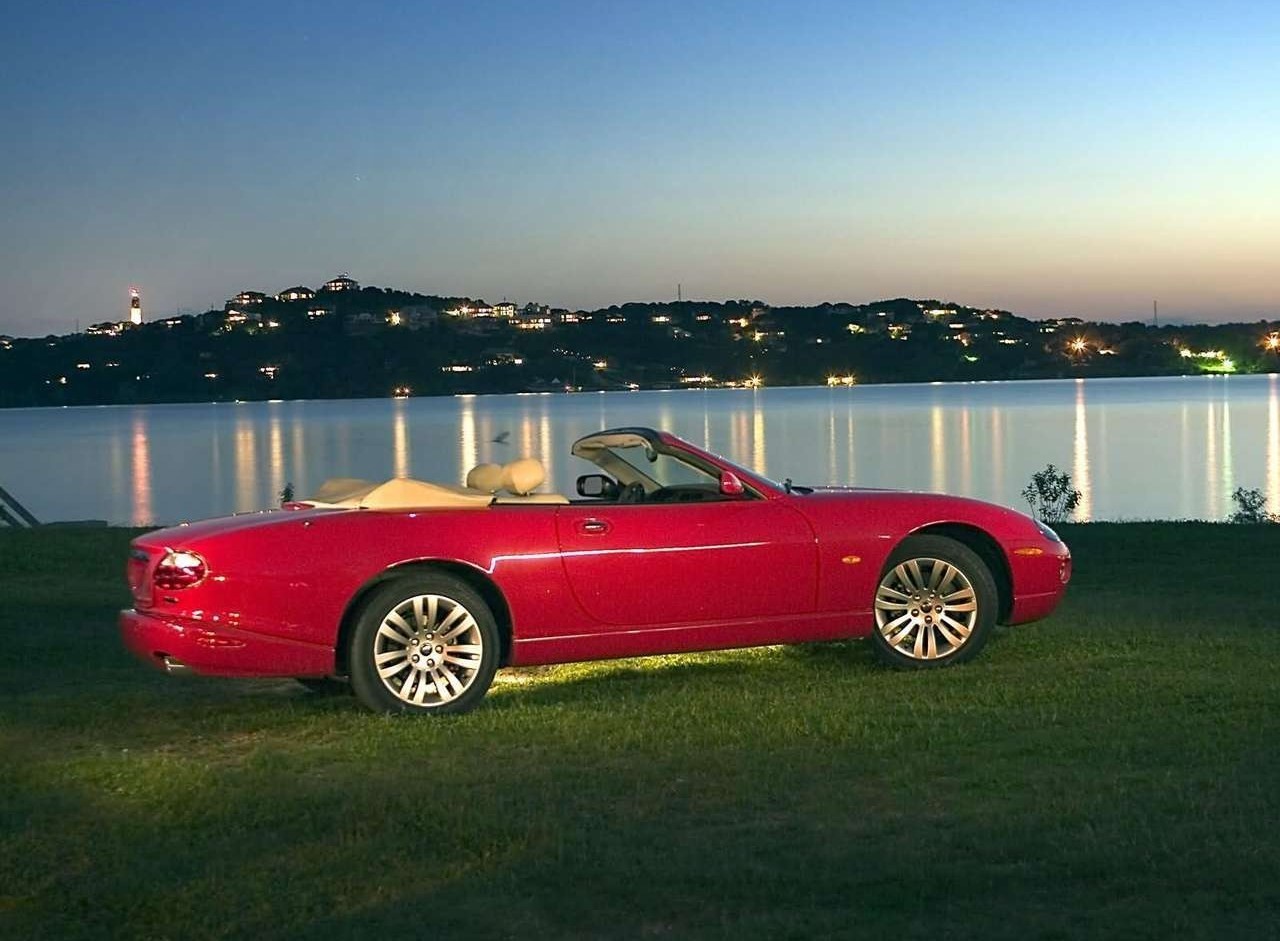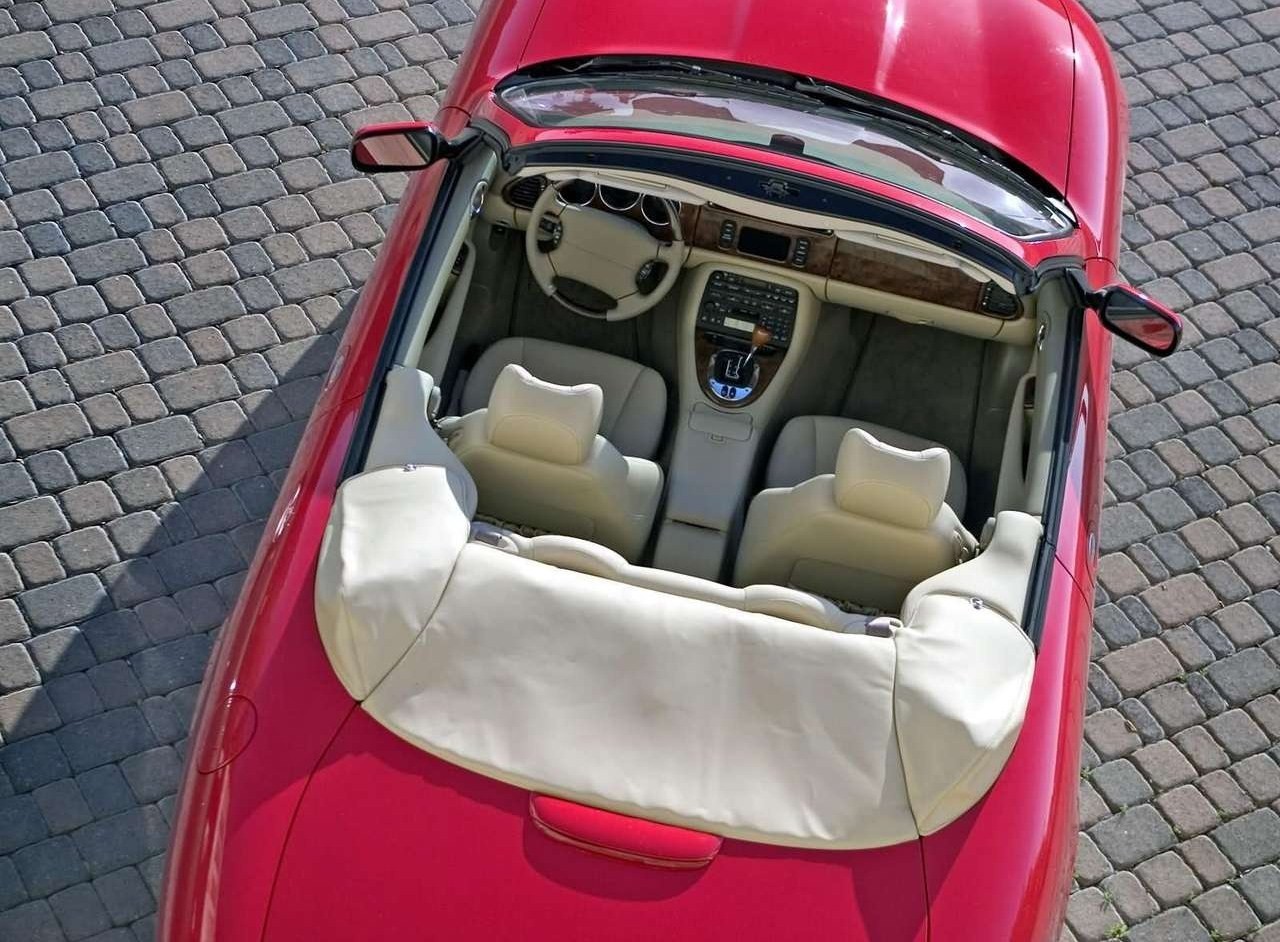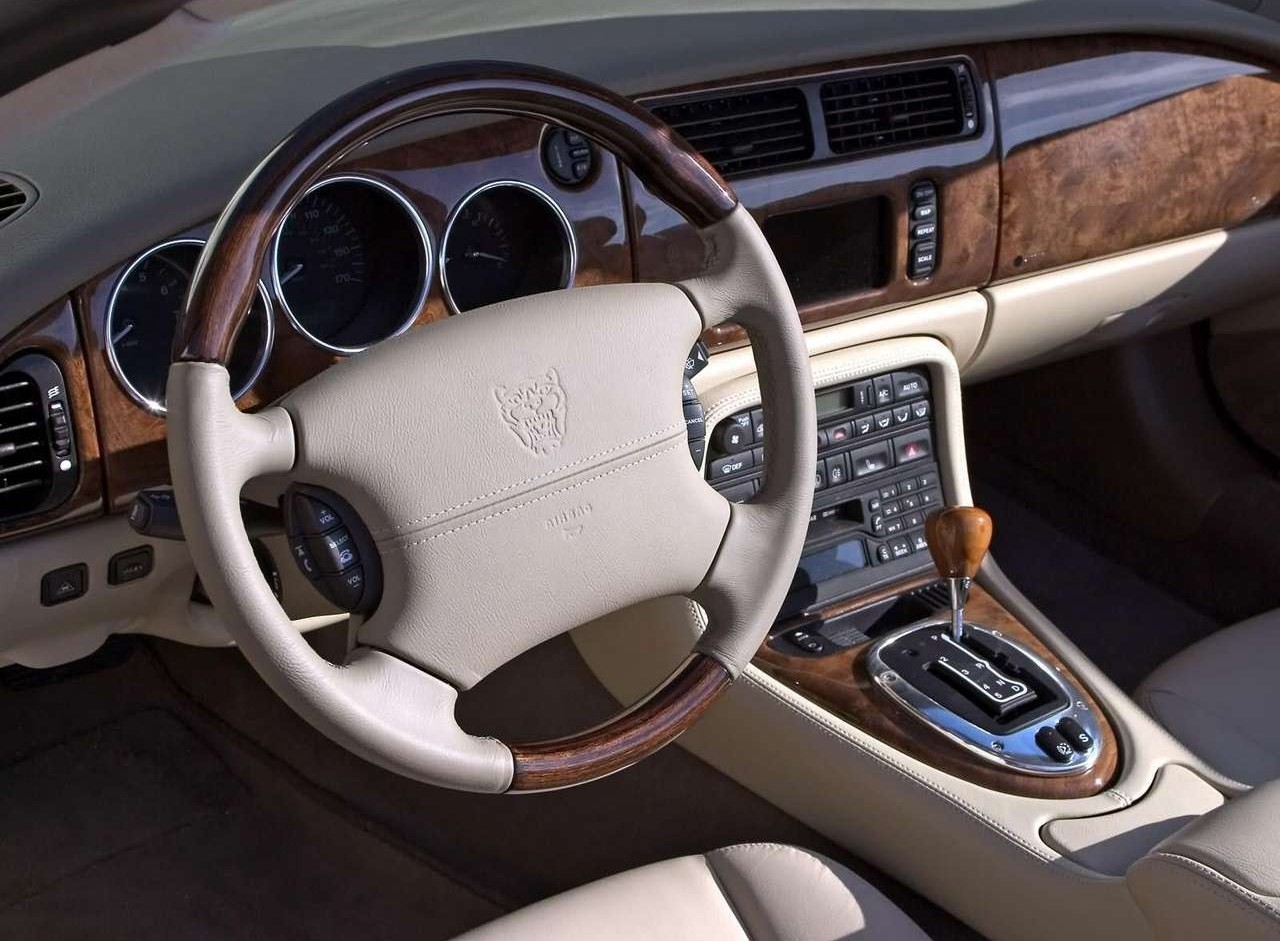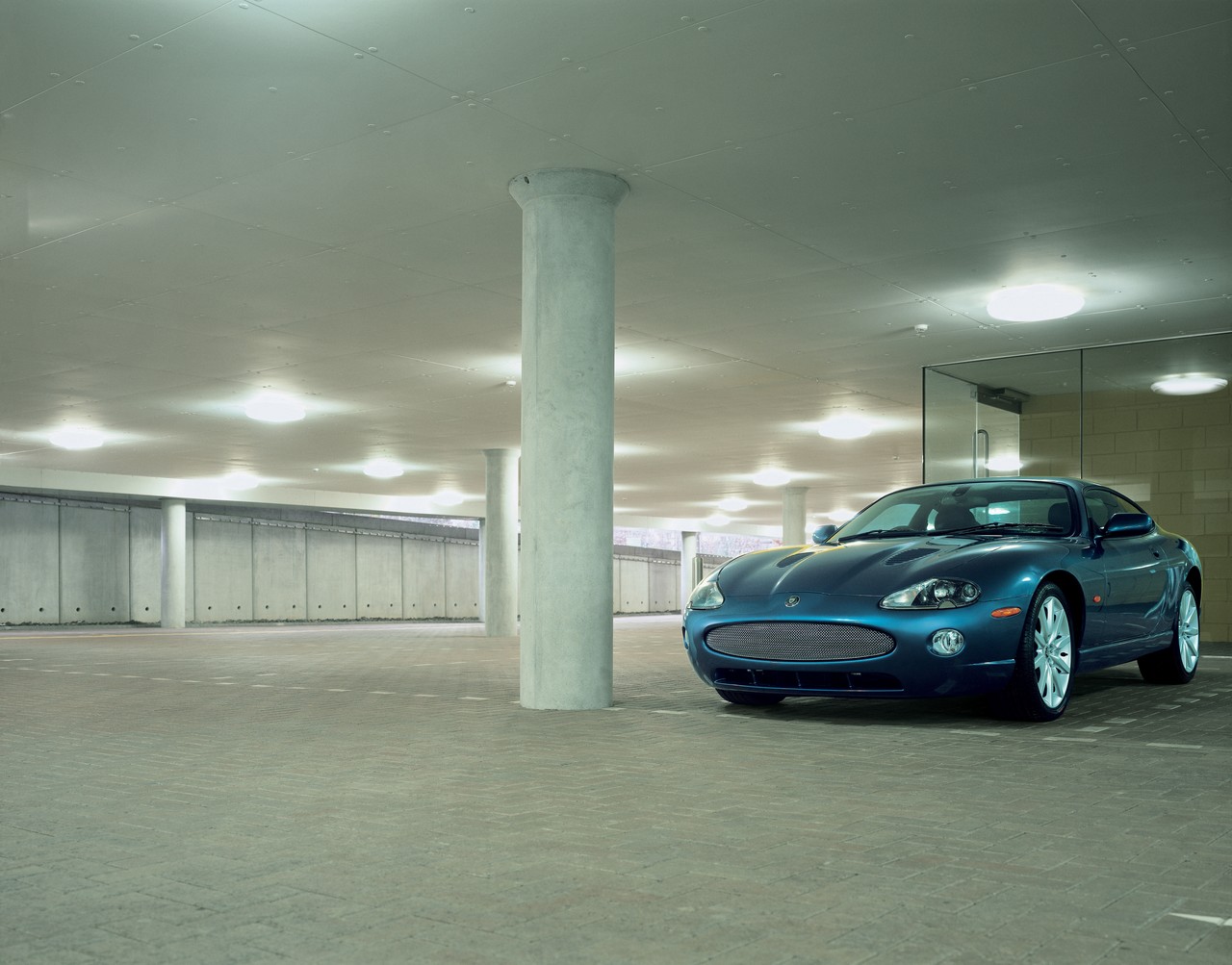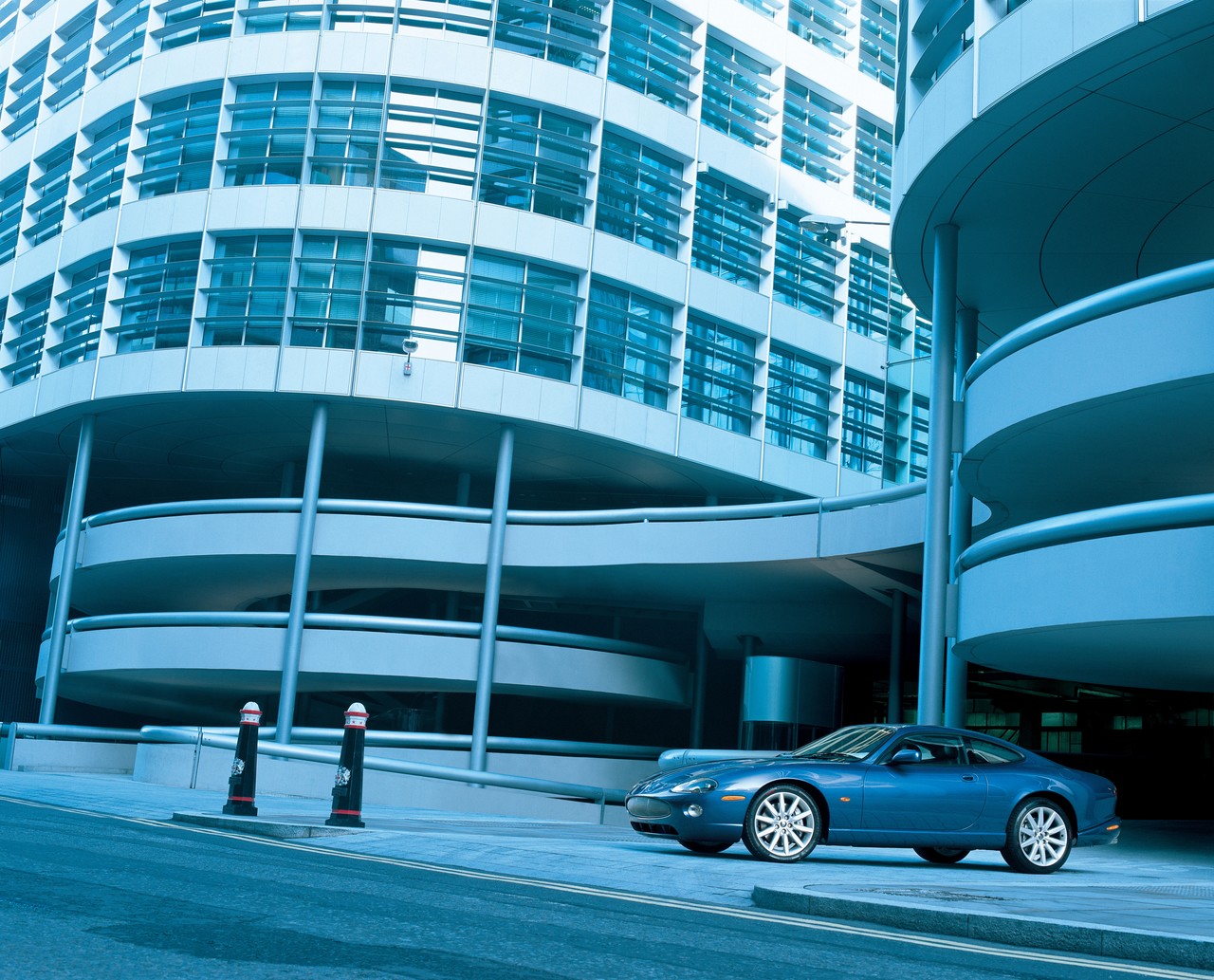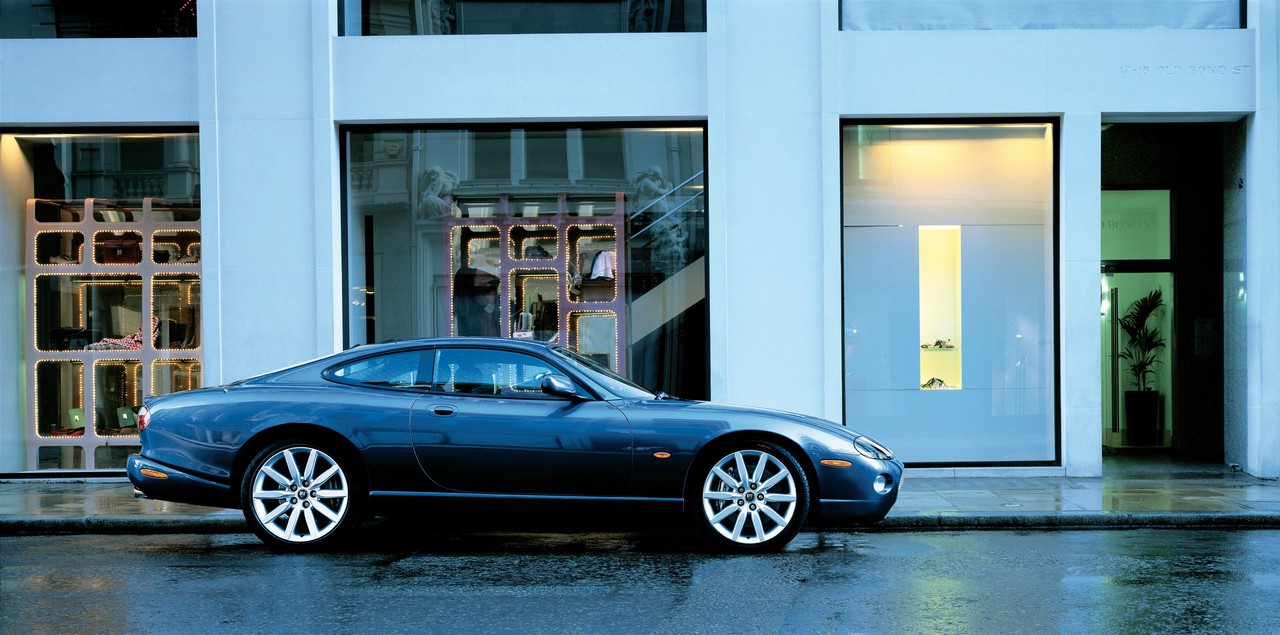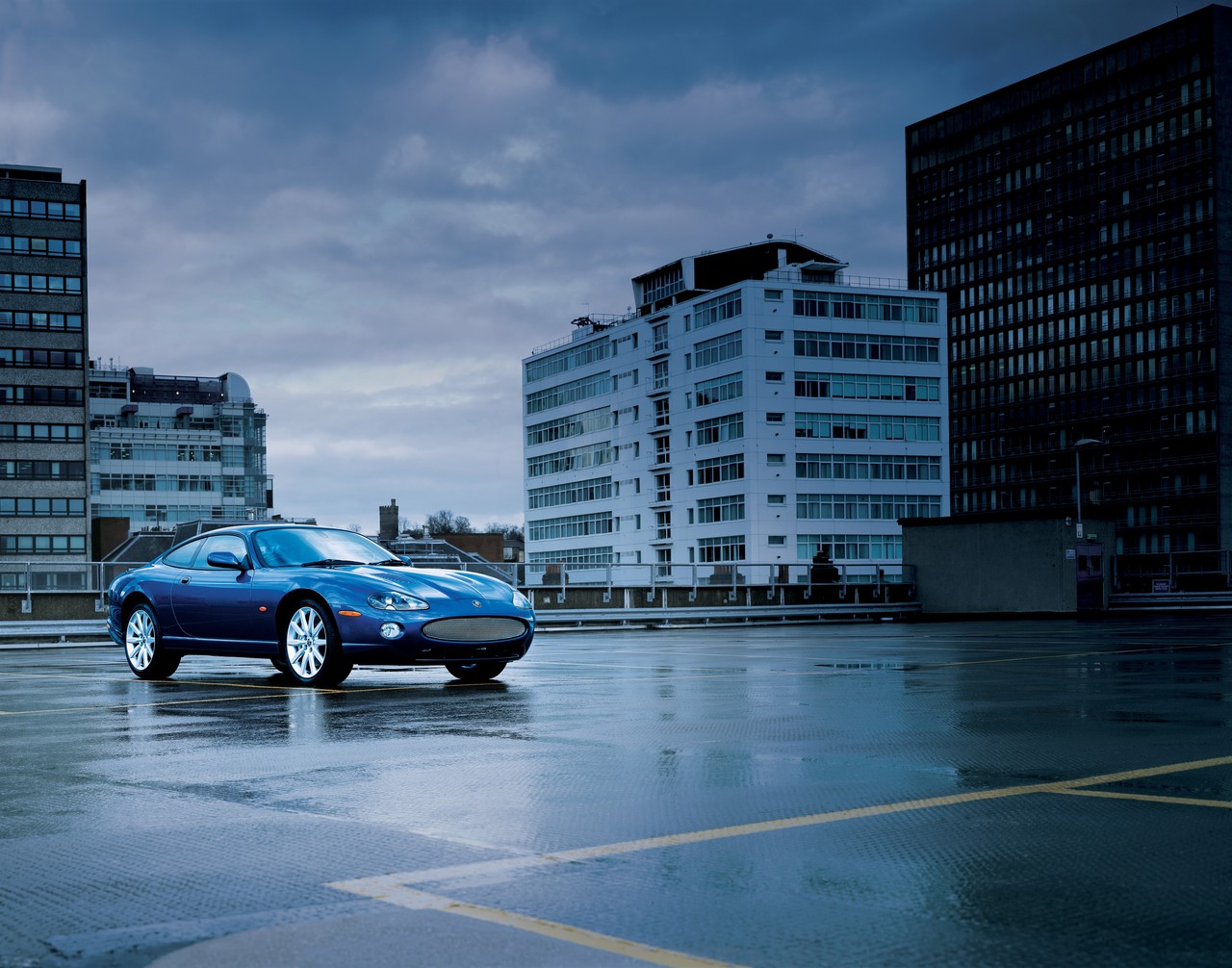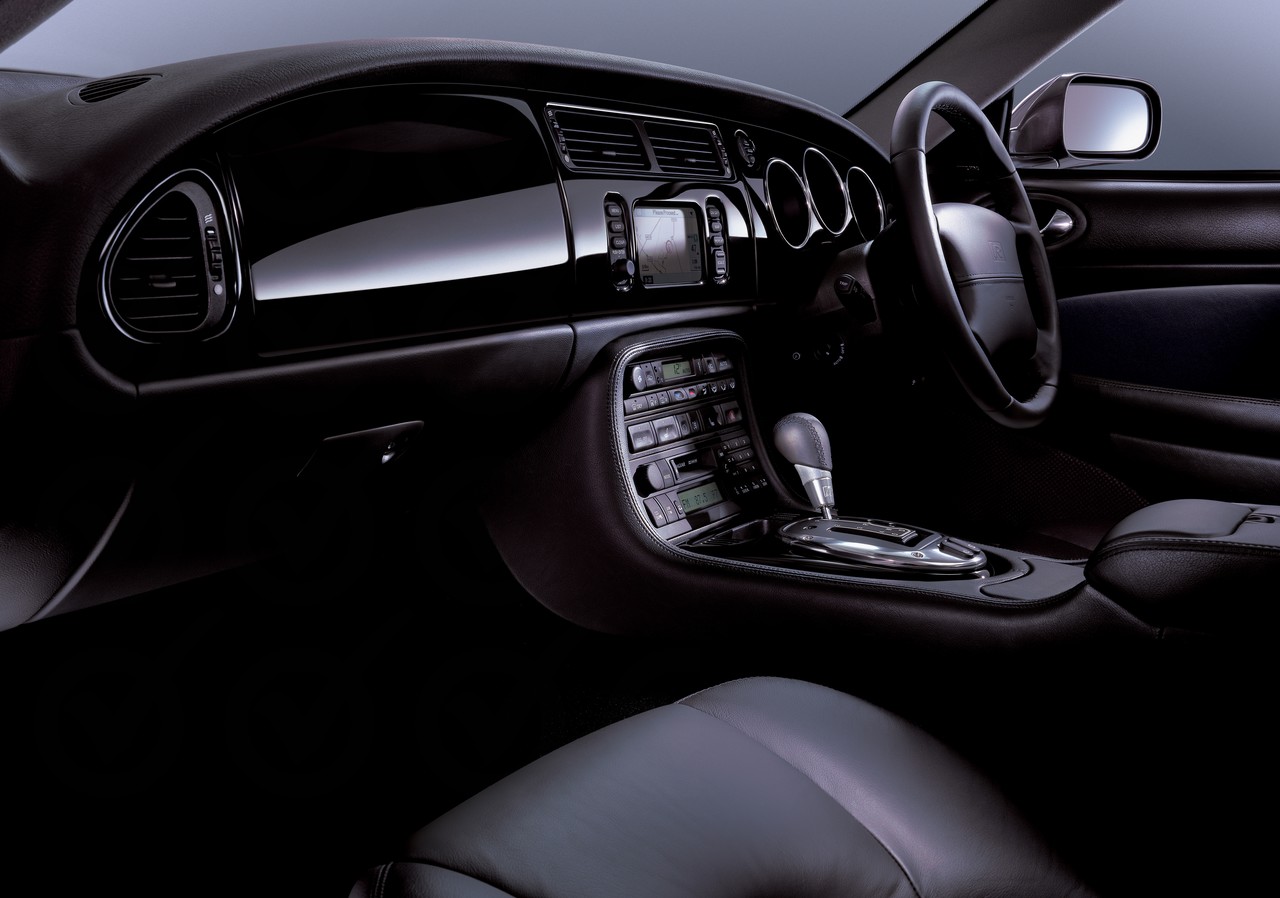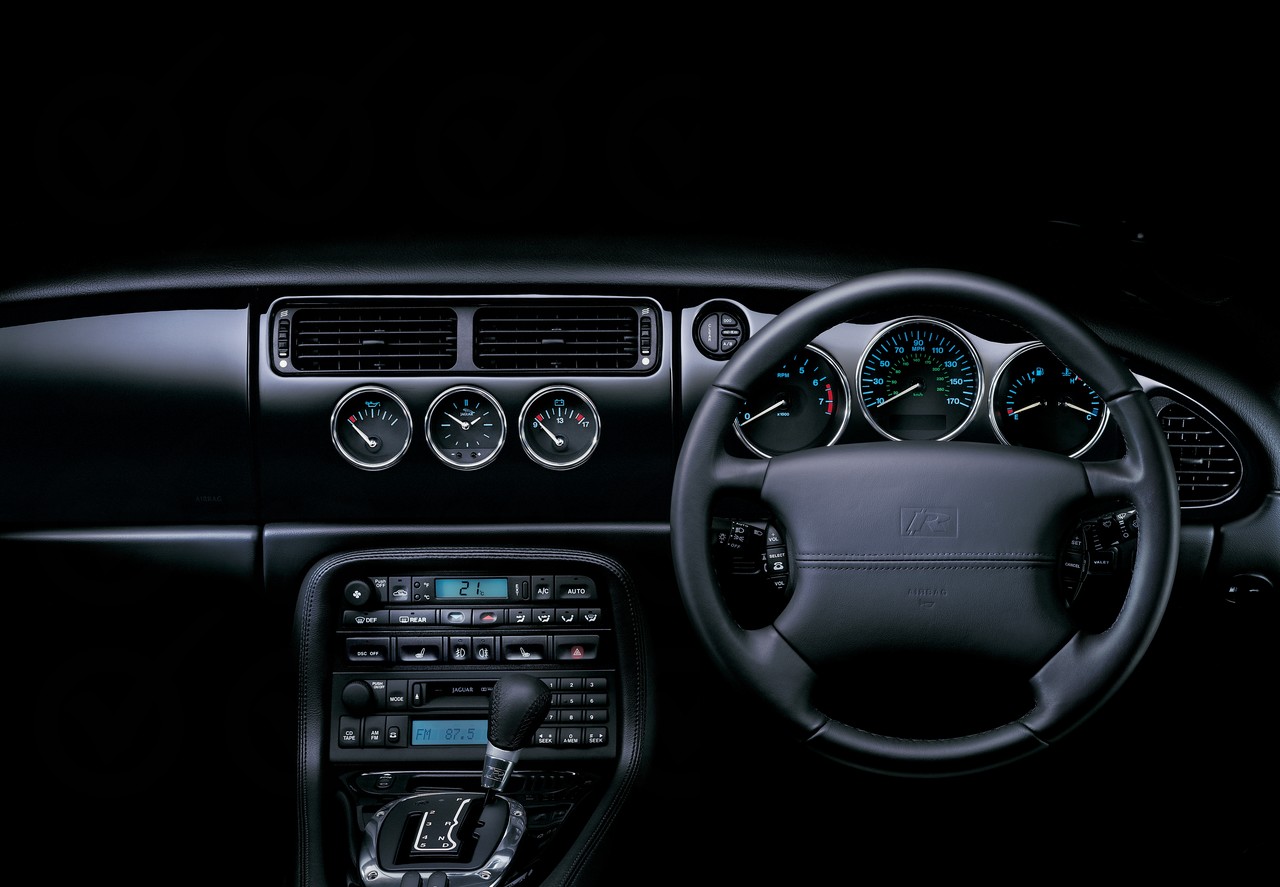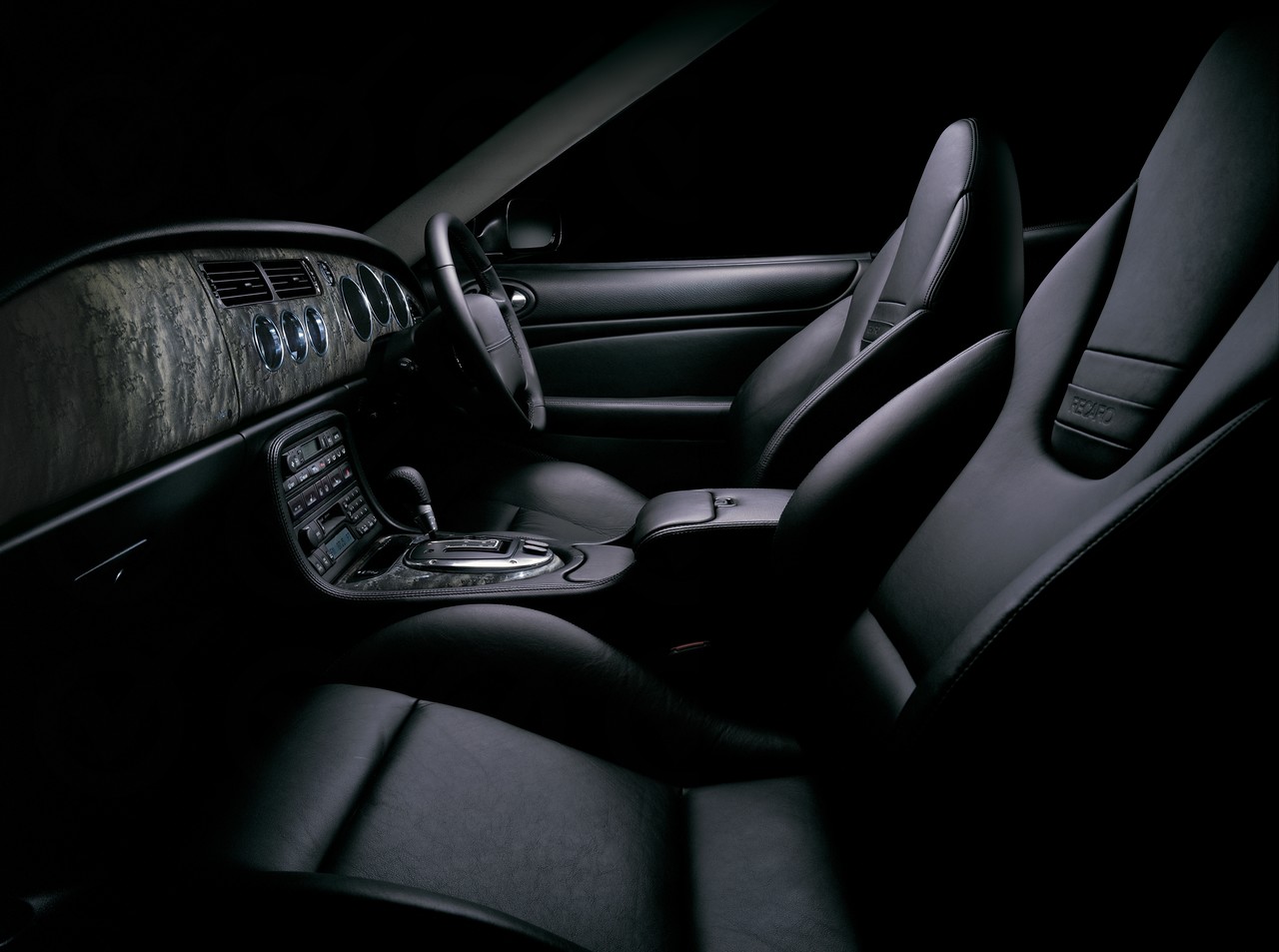
- Refined V8 engines
- Supple ride
- High quality interior finishes
- Alluring styling
- Cramped rear seats
- Original plastic chain tensioners could fail prematurely
- Original coolant pumps susceptible to failure
- For X100 XKR, 4.2-litre supercharged V8 only delivers its best at WOT. Modifications should be considered .
Review: Jaguar X100.I XK8 and XKR (1996-00)
Overview
Released in October 1996, the Jaguar X100 Series I (X100.I) XK range consisted of XK8 and XKR coupes and convertibles. Manufactured in Coventry, England, the rear-wheel drive XK8 and XKR were powered by naturally aspirated and supercharged 4.0-litre V8 petrol engines, respectively, that were mated to five-speed automatic transmissions.
AJ26 and AJ26S engines
Of the engines,
- the naturally aspirated 4.0-litre AJ26 V8 engine had an aluminium block and cylinder head, double overhead camshafts (per cylinder bank), variable cam phasing and four valves per cylinder. From 1998, the engine also featured variable valve timing (known as the AJ27 engine); and,
- the AJ26S engine differed in that it was fitted with an Eaton M112 roots-type supercharger, twin air-to-liquid intercoolers and omitted variable cam timing. In October 1998, the AJ26S was upgraded with an improved engine management system and oil temperature sensor.
While the naturally aspirated engine was mated to a five-speed ZF 5HP24 automatic transmission, the supercharged engine was mated to Mercedes-Benz’s W5A580 automatic unit.
Dimensions
The X100 XK8 coupe was 4760 mm long, 1829 mm wide, 1296 mm tall and had a 2588 mm long wheelbase; convertible models differed in that they were 10 mm taller (1306 mm). For the convertible, the power-operated soft-top roof had one-button operation, automatic latching and a heated rear window; raising or lowering the roof could be completed in 20 seconds.
Suspension
The front suspension used unequal length upper and lower wishbones, while the independent rear suspension featured double wishbones. As an extra-cost option, the XK8 could be specified with Jaguar’s Computer Active Technology Suspension (CATS) which included uprated springs for increased roll stiffness and electronically-controlled, adaptive dampers. The XKR, however, was fitted with CATS as standard.
| Variants | Years | Engine | Trans. | Peak power | Peak torque | |
|---|---|---|---|---|---|---|
| XK8 | Sport, Classic |
1996-00 | 4.0-litre petrol V8 | 5sp auto | 216 kW at 6100 rpm | 393 Nm at 4250 rpm |
| XKR | Sport, Classic |
1998-00 | 4.0-litre s/charged petrol V8 | 5sp auto | 276 kW at 6150 rpm | 525 Nm at 3600 rpm |
| with R features | 2000 |
Safety equipment
Standard safety equipment included dual front airbags, ABS, traction control and mechanically-activated front seatbelt pretensioners.
Features
Standard features for the XK8 included alloy wheels (17-inch wheels for convertibles, 18-inch wheels for coupes), a four speaker sound system with a CD player, climate control air conditioning, leather seats, power adjustable front seats, cruise control, front fog lights, remote central locking, power mirrors and windows, a trip computer, an alarm and immobiliser. The Sport variants were differentiated by their firmer suspension settings, while the Classic variants had burr walnut interior trim and a leather-wrapped steering wheel.
The XKR models were further equipped with 18-inch wheels with sports suspension (for both coupes and convertibles), a six-disc CD player, heated front seats and tilt and telescopic steering wheel adjustment.
October 1999: XK update
In October 1999, the XK range was updated and safety equipment was improved with the introduction of an ‘ABS Plus’ braking system and electronically-activated front seatbelt pretensioners. Standard features were also extended to include a six speaker sound system, while the XKR was fitted with rain-sensing wipers.
2000 XKR with R features
In July 2000, a limited-run XKR ‘with R features’ edition was released. Compared to the XKR Sport, the XKR with R features was distinguished by its 20-inch BBS alloy wheels with Pirelli P-Zero tyres and lowered suspension, an enhanced CATS (Computer Active Technology Suspension) control unit and rear parking sensors. The XKR with R features was also fitted with a Brembo braking system with 355 mm by 32 mm front and 300 mm by 28 mm rear cross-drilled and ventilated four-piston aluminium brake calipers.
Review: Jaguar X100.II XK8 and XKR (2000-02)
Overview
Released in November 2000, the X100 Series II (X100.II) XK8 and XKR introduced improved safety equipment, additional features and mechanical changes. The range was also revised as the ‘Sport’ variants were discontinued and the ‘Classic’ variants were no longer identified as such.
Visually, the X100.II XK8 and XKR could be identified by their new ‘jewel-like’ tail-lights with chrome surrounds, new front and rear bumper covers, a chrome boot lid plinth, the omission of front fog light recesses, new alloy wheel designs for the XK8 and, for the XKR, larger tail pipe finishers.
| Variants | Years | Engine | Trans. | Peak power | Peak torque | |
|---|---|---|---|---|---|---|
| XK8 | N/A | 2000-02 | 4.0-litre petrol V8 | 5sp auto | 216 kW at 6100 rpm | 393 Nm at 4250 rpm |
| XKR | N/A | 2000-02 | 4.0-litre s/charged petrol V8 | 5sp auto | 276 kW at 6150 rpm | 525 Nm at 3600 rpm |
| with R features | 2000-02 |
Safety equipment
Compared to their X100.I predecessors, safety equipment for the X100.II XK8 and XKR was improved with the introduction of front seat-mounted side airbags. The X100.II also introduced Jaguar’s new Adaptive Restraint Technology System (ARTS), which used sensors to monitor the position of the front passengers, their weight and the severity of an impact.
Features
Standard features were extended to include twelve-way power adjustable front seats and height adjustable front cushions. Furthermore, the XK8 was fitted with ‘Classic Five Flute’ seats with leather facings, while the XKR had new embossed leather ‘Sports’ seats.
Review: Jaguar X100.III XK8 and XKR (2002-05)
Overview
Released in October 2002, the X100 Series III (X100.III) XK8 and XKR introduced new engines and transmissions. The 4.2-litre AJ33 V8 engines were stroked versions of their predecessors, but also featured stiffer blocks, oil-cooled pistons, new exhaust manifolds and camshafts, small-pitch silent camchains, bigger cylinder-head porting, an upgraded fuel system and vane-type variable cam phasing. Furthermore, the five-speed automatic transmissions were also replaced by ZF’s six-speed 6HP26 automatic.
Visually, the X100.III XK could be identified by its new badging, alloy wheel designs and paint finishes (Jaguar Racing Green, Ebony, Midnight and Adriatic Blue); XKR variants could also be identified by their standard xenon headlights. Inside, there were new interior trim combinations (Warm Charcoal contrasted with Heritage Tan or Cranberry) and a revised J-gate gear shift.
January 2005: XK update
In January 2005, deliveries of updated X100.III XK8 and XKR models commenced. Pictured above, these updated models could be identified by their revised front and rear masks, new side sills, trim and rear spoilers; the XK8 was fitted with larger exhaust tail-pipe finishers, while the XKR was fitted with a mesh grille supplemented by a lower ‘mouth profile’ in the front bumper. Inside, Elm and Piano Black veneers were made available, while an Automatic Speed Limiter was also introduced.
| Variants | Years | Engine | Trans. | Peak power | Peak torque | |
|---|---|---|---|---|---|---|
| XK8 | N/A | 2002-05 | 4.2-litre petrol V8 | 6sp auto | 224 kW at 6000 rpm | 420 Nm at 3500 rpm |
| XKR | N/A | 2002-05 | 4.2-litre s/charged petrol V8 | 6sp auto | 298 kW at 6100 rpm | 553 Nm at 3500 rpm |
| 4.2-S | 2005 |
Safety equipment
Compared to their X100.II predecessors, standard safety equipment for the X100.III XK8 and XKR was improved with the introduction of electronic stability control and brake assist.
Features
Standard features were extended to include heated front seats, rain-sensing wipers, automatic headlights, a power adjustable steering column and heated mirrors. The XKR was further equipped with xenon headlights and a Brembo braking package as standard.
XKR 4.2-S
In April 2005, a limited-run XKR 4.2-S variant was released. Visually, the 4.2-S could be identified by its 20-inch BBS ‘Perseus’ alloy wheels, a white-face Growler badge on the bonnet with chequered flag accents and two metallic paint finishes: Midnight Black and Satin Silver. Inside, the 4.2-S featured soft-grain leather upholstery, a dark carbon-fibre veneer instrument panel, Bluetooth connectivity, a Momo gear knob and aluminium interior trim.
2005 XK8 and XKR Victory editions
In late 2005, limited-run XK8 and XKR Victory editions were released (in both coupe and convertible bodies) to commemorate Jaguar’s four championship wins in the North American Trans-Am road racing series.
Visually, the XK8 Victory editions could be identified by their 19-inch ‘Atlas’ chrome-finished alloy wheels, while XKR Victory editions were fitted with 20-inch BBS alloy wheels. For both models, the Jaguar Growler emblem included checkered flags on its sides. In addition to the standard paint finishes, the Victory editions were also available in Copper Black Metallic, Frost Blue Metallic, Bay Blue Metallic and Satin Silver Metallic finishes.
Inside, the Victory editions had premium soft-grain leather seats with contrasting stitching, polished door treadplates with checkered flag emblems and leather-edged floor mats. Furthermore, four interior colours and two veneer options were available; XK8 models were offered with a new Elm wood veneer, while XKR models had carbon fibre interior trim as standard.
Standard features were also extended to include Bluetooth wireless connectivity, while the XK8 had power folding mirrors.
Related links
